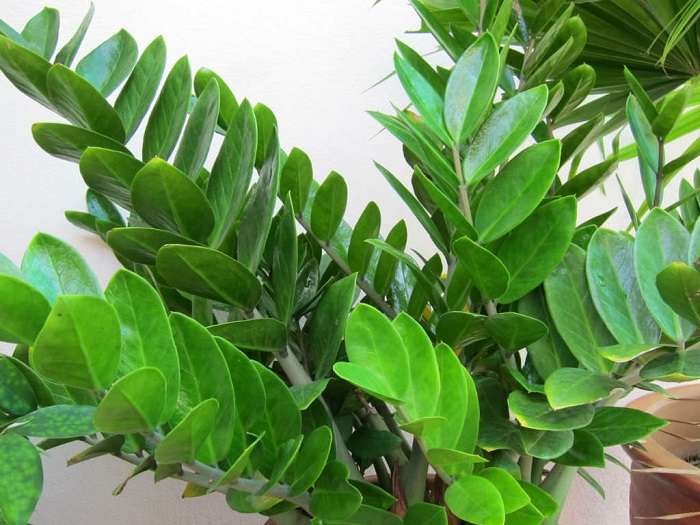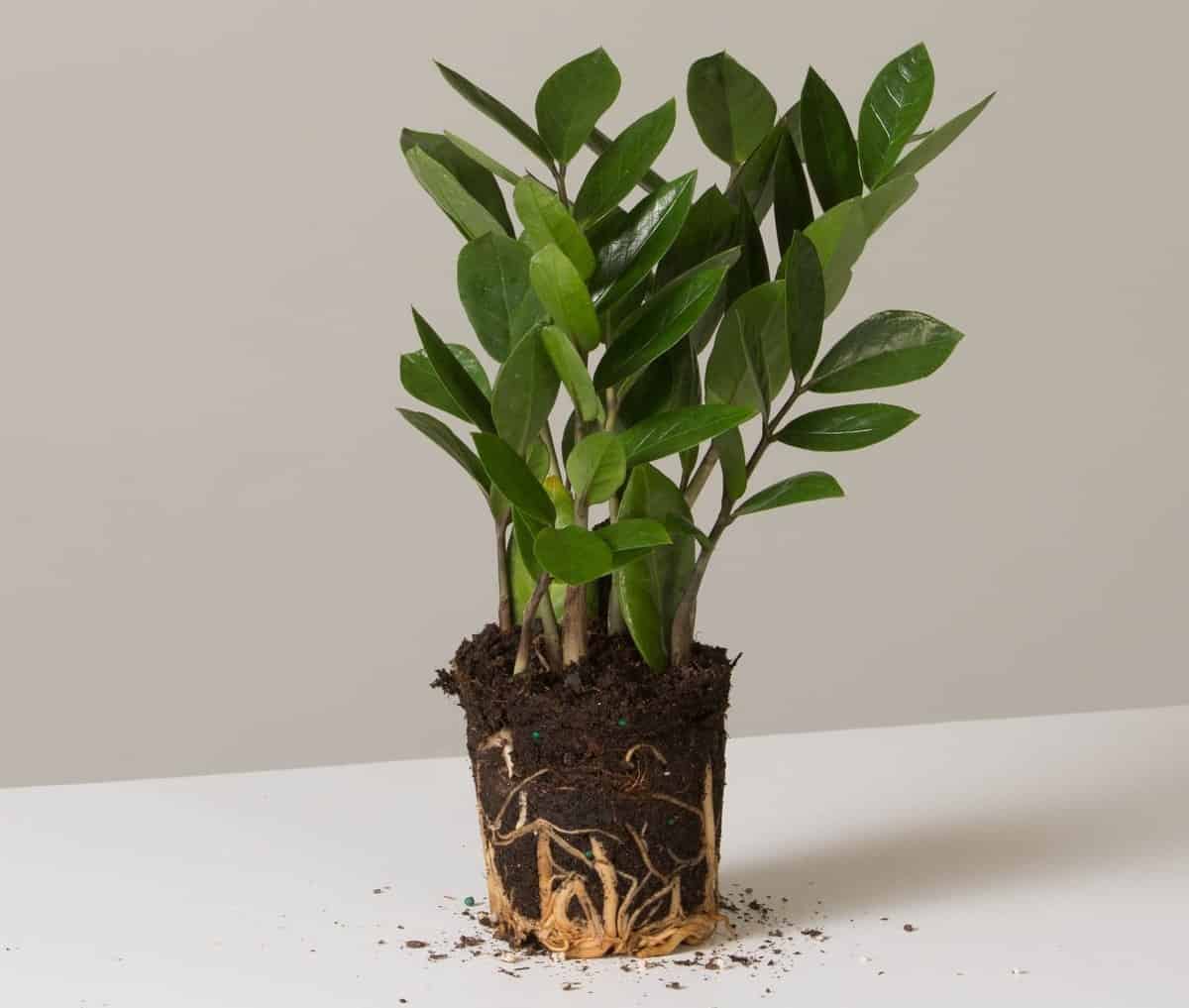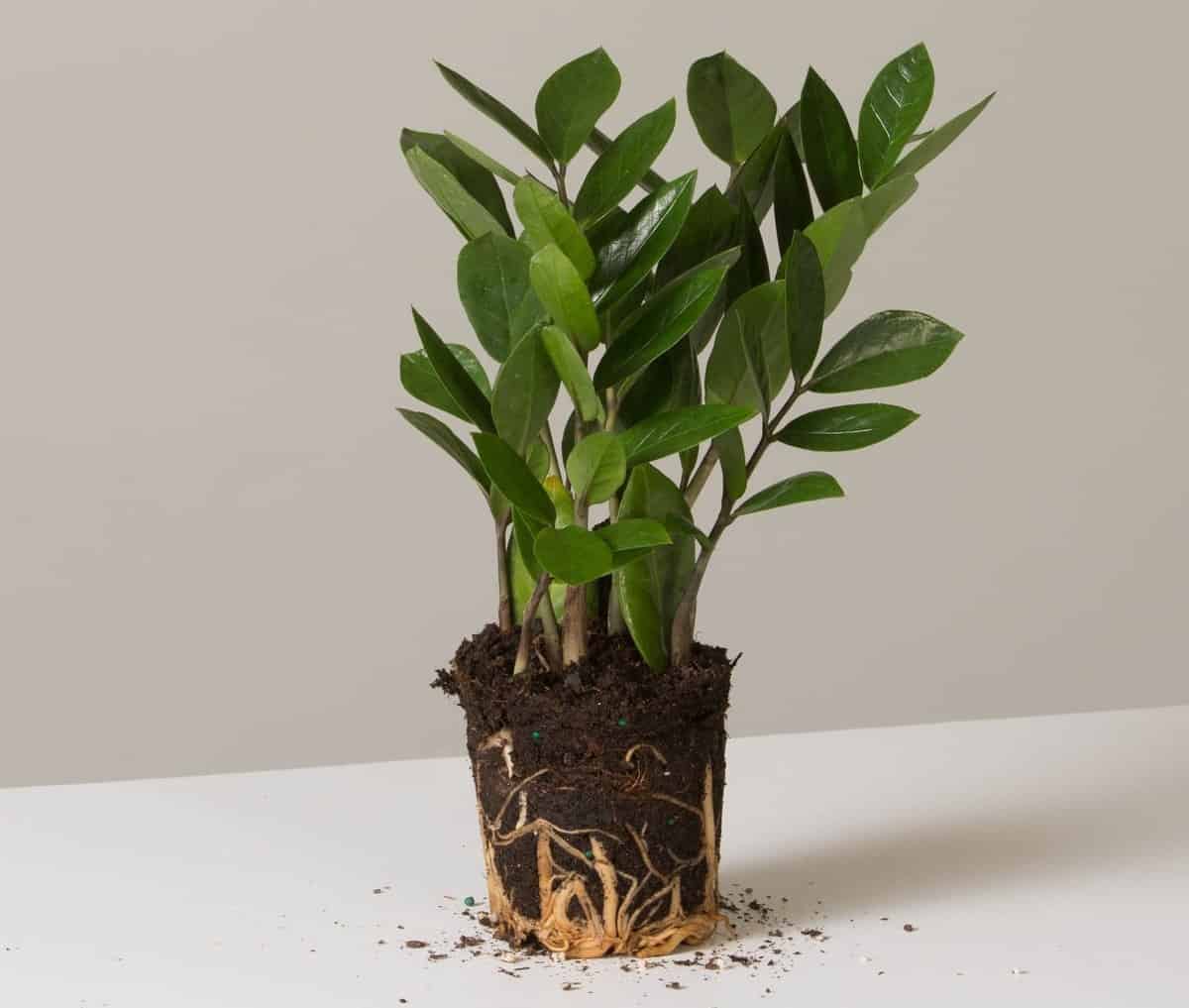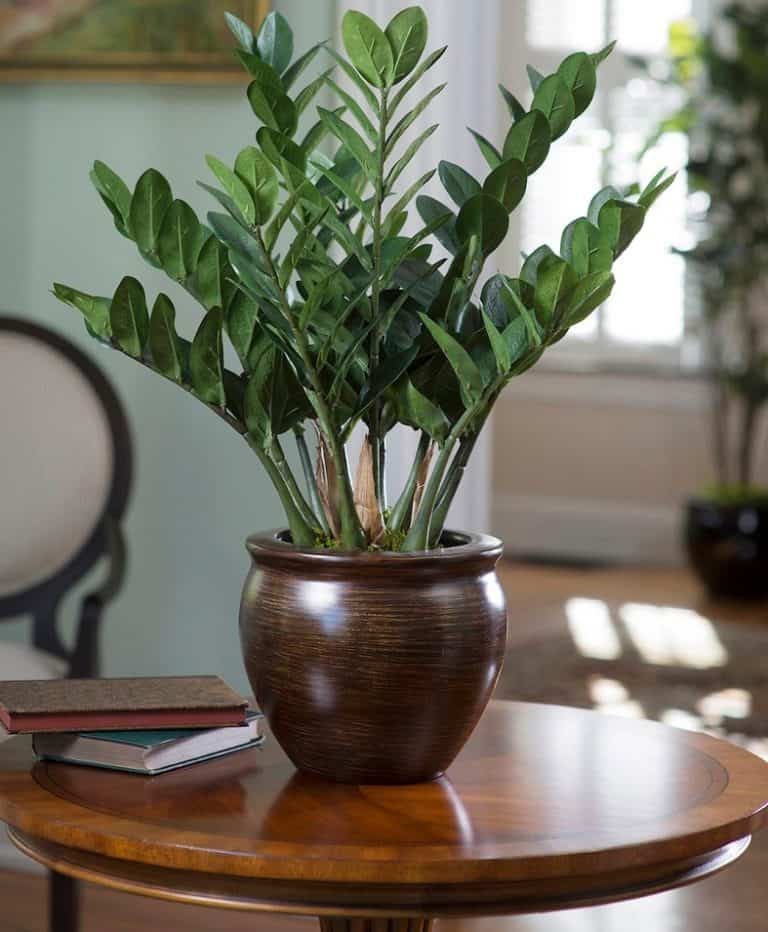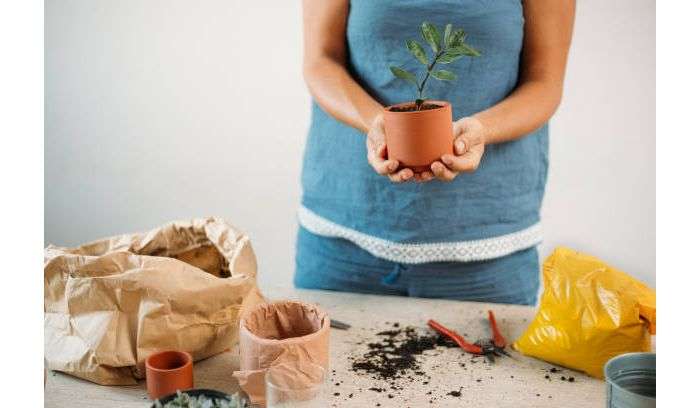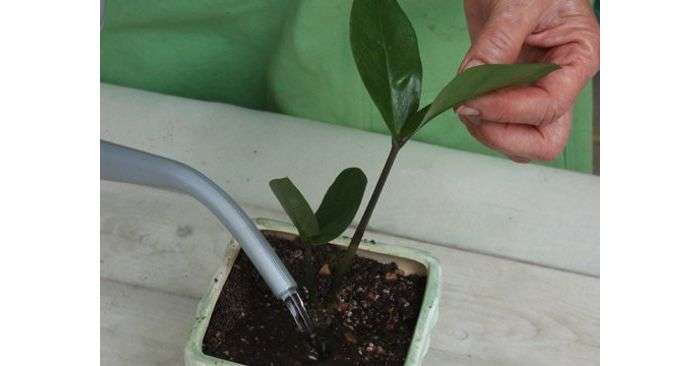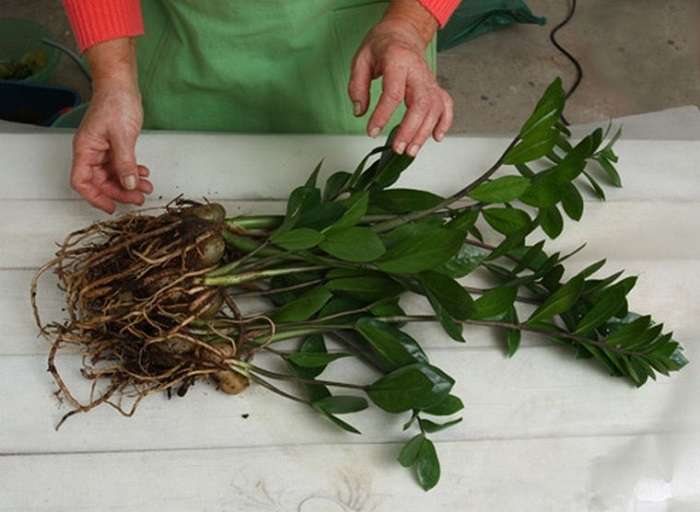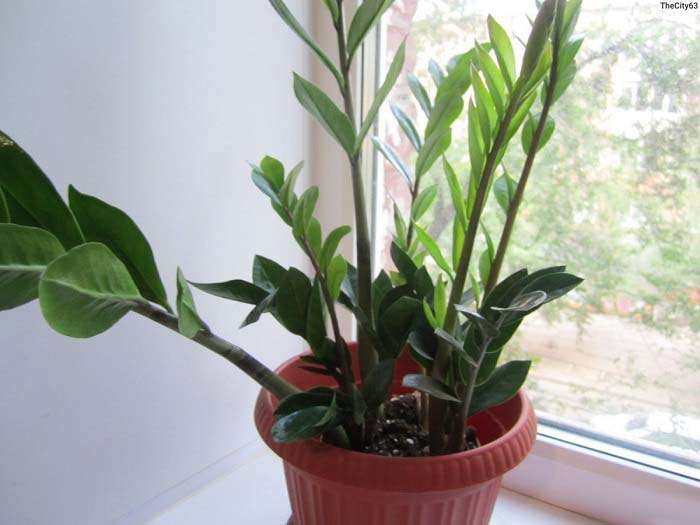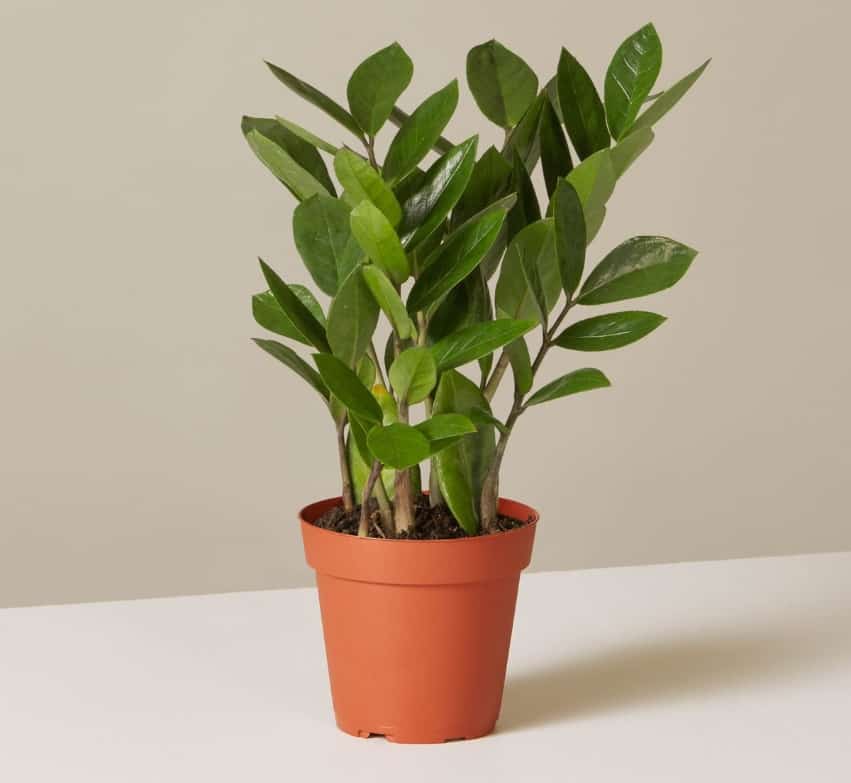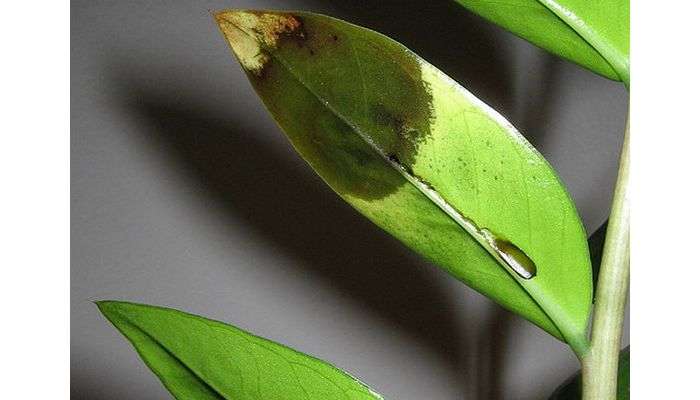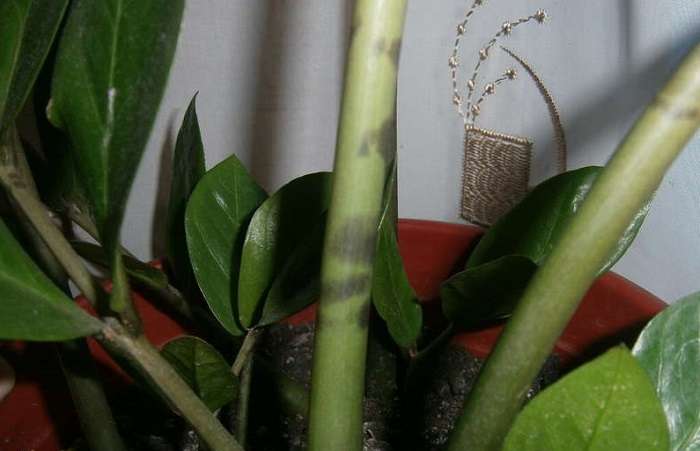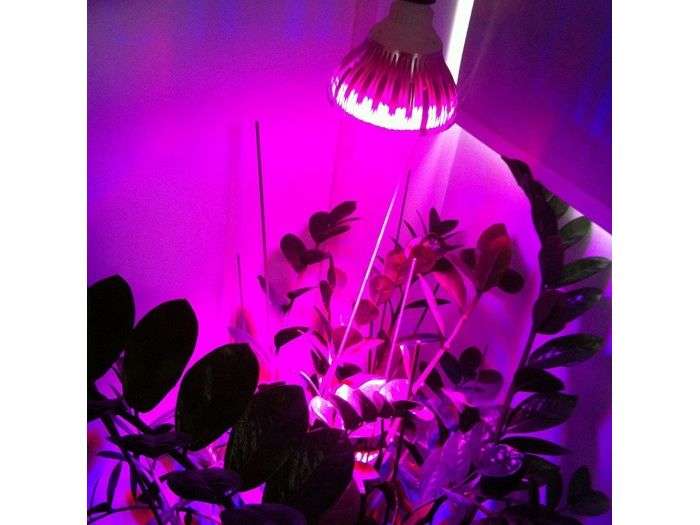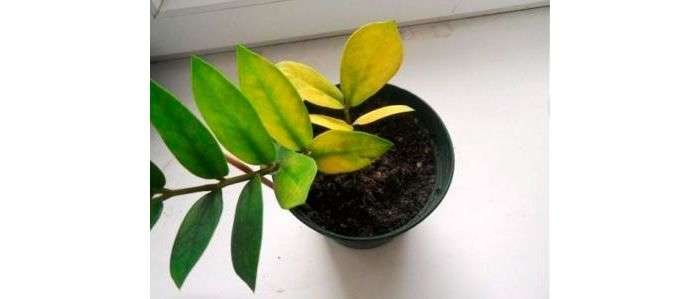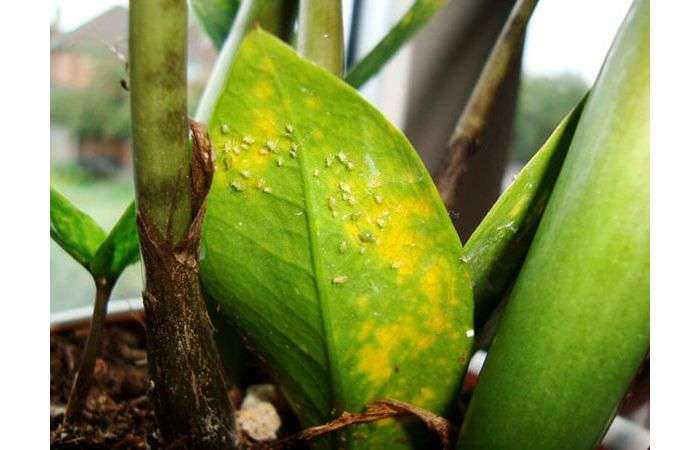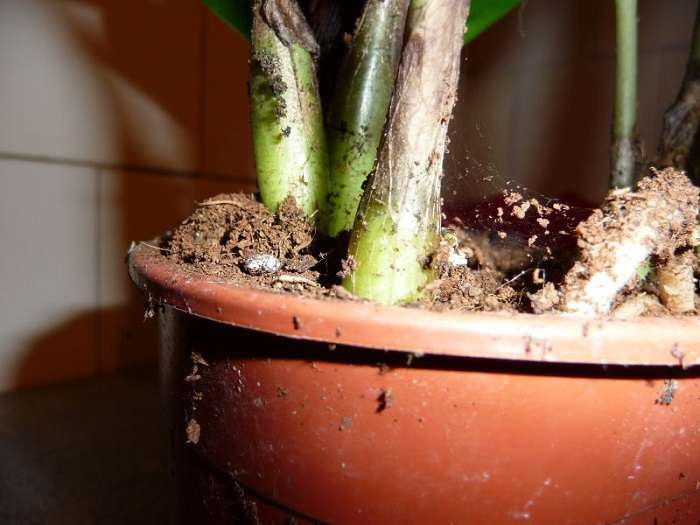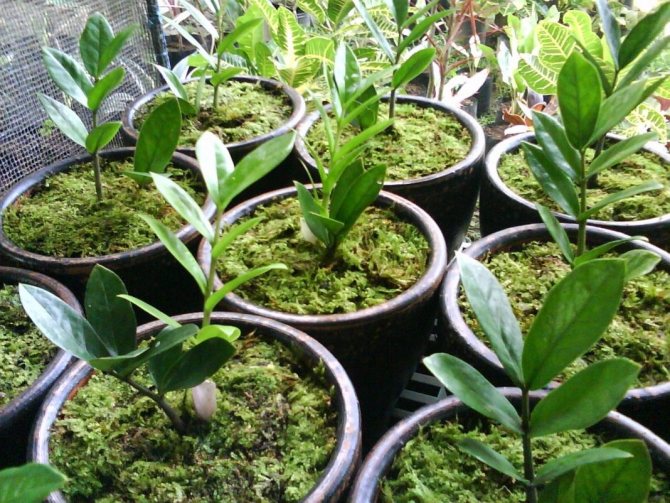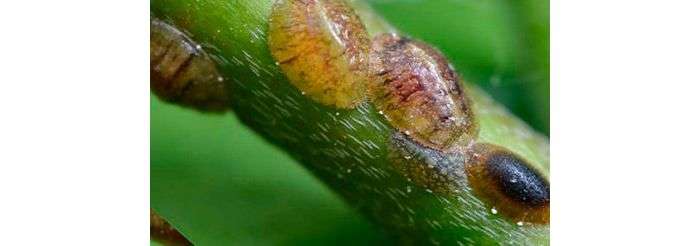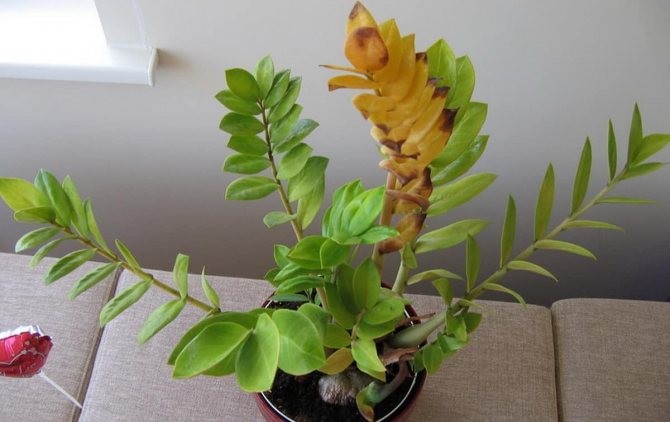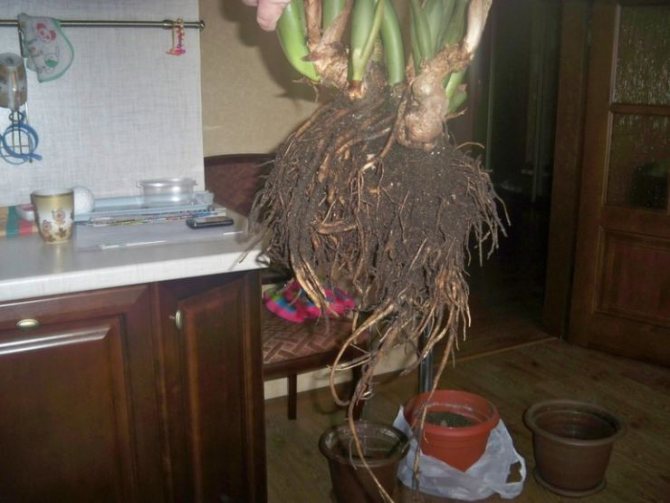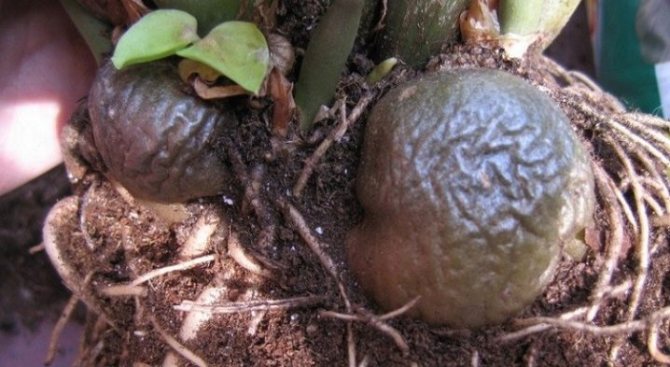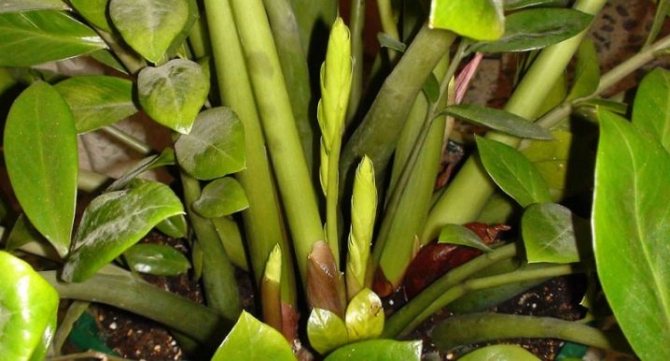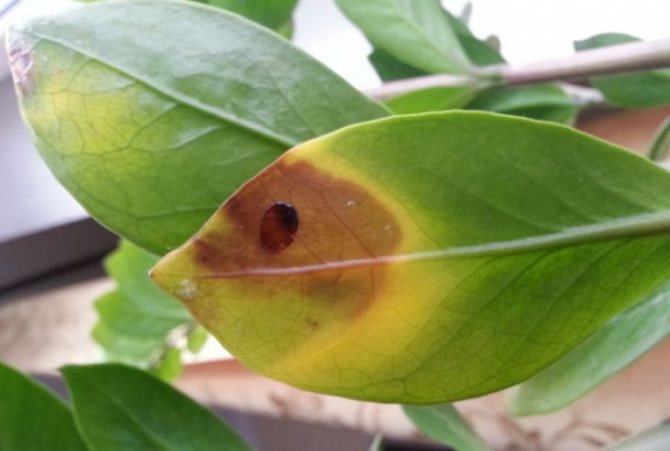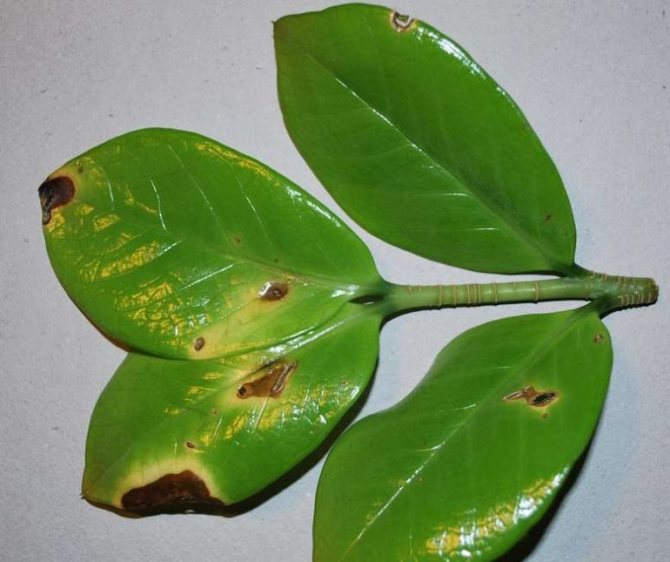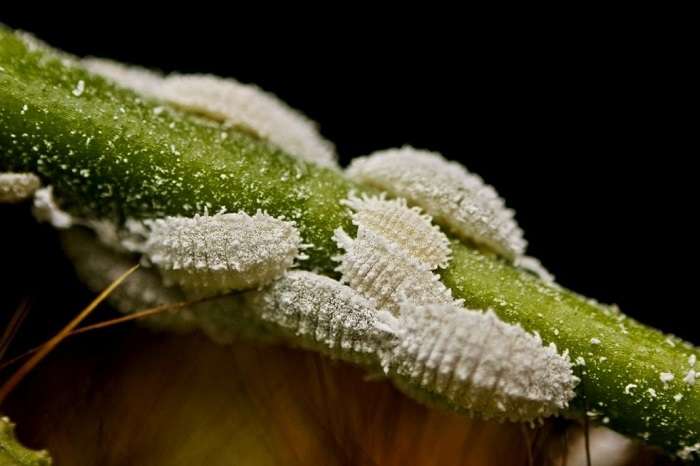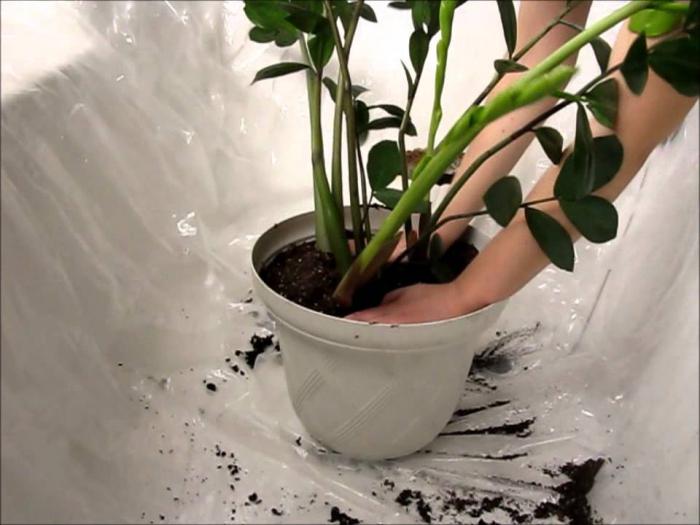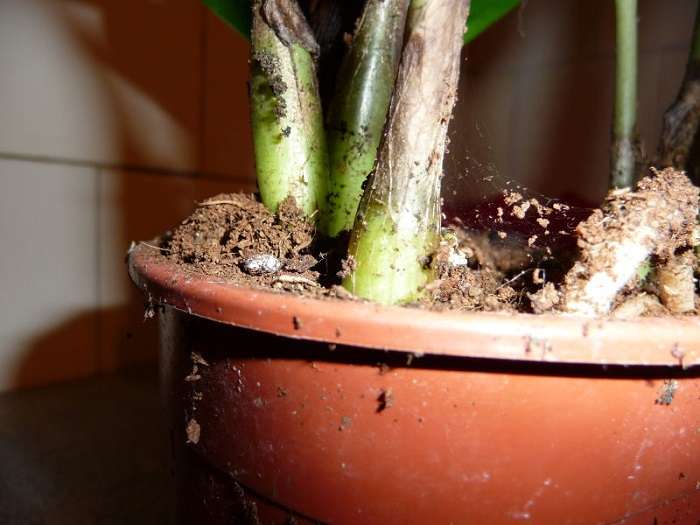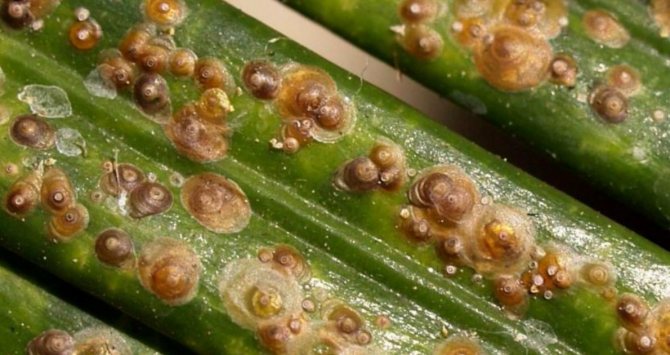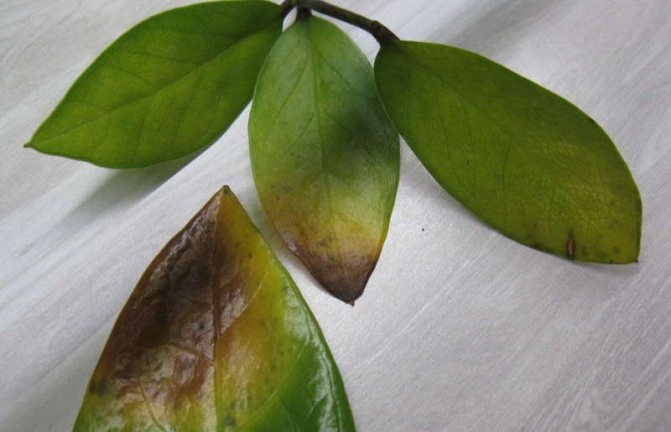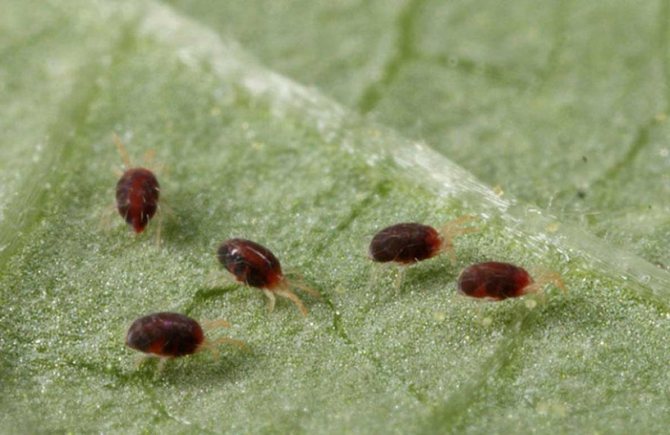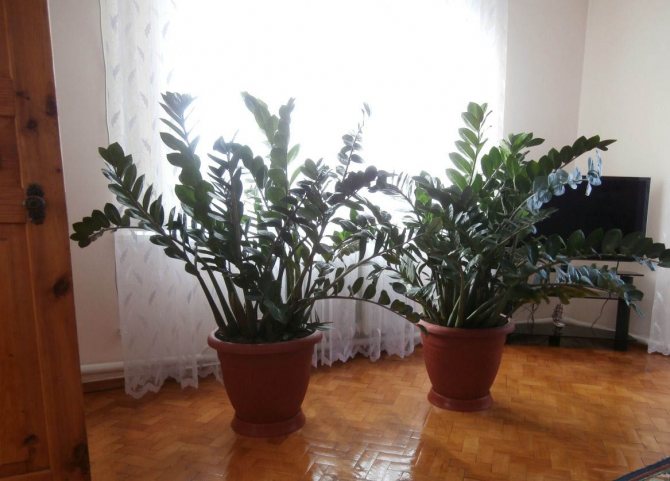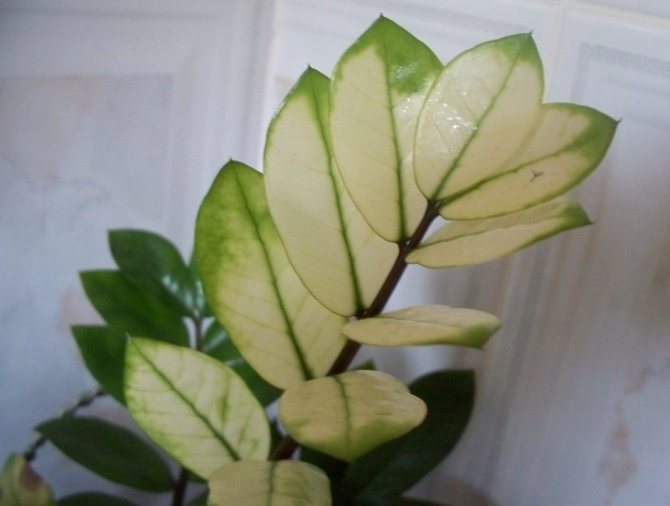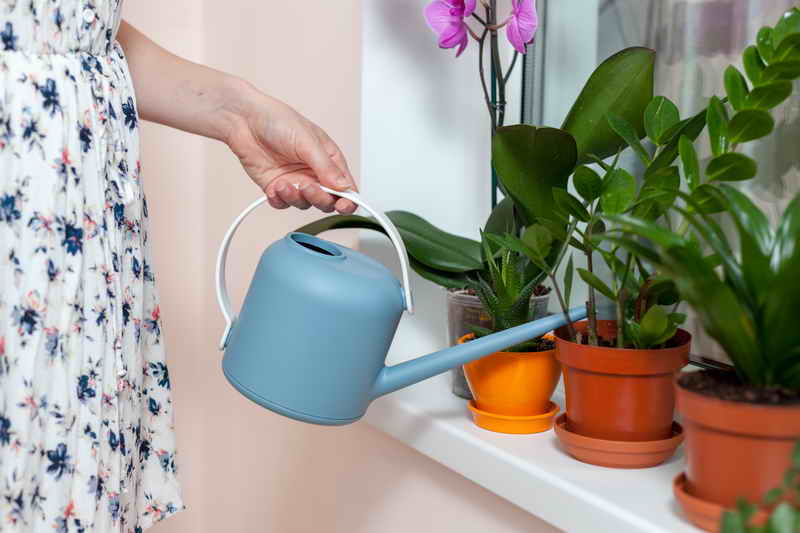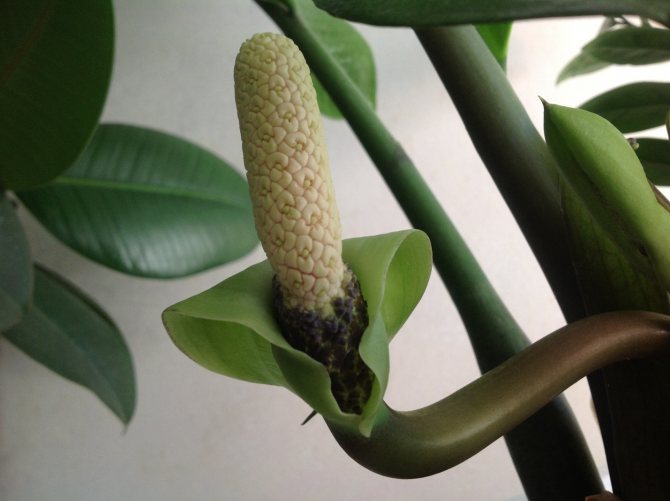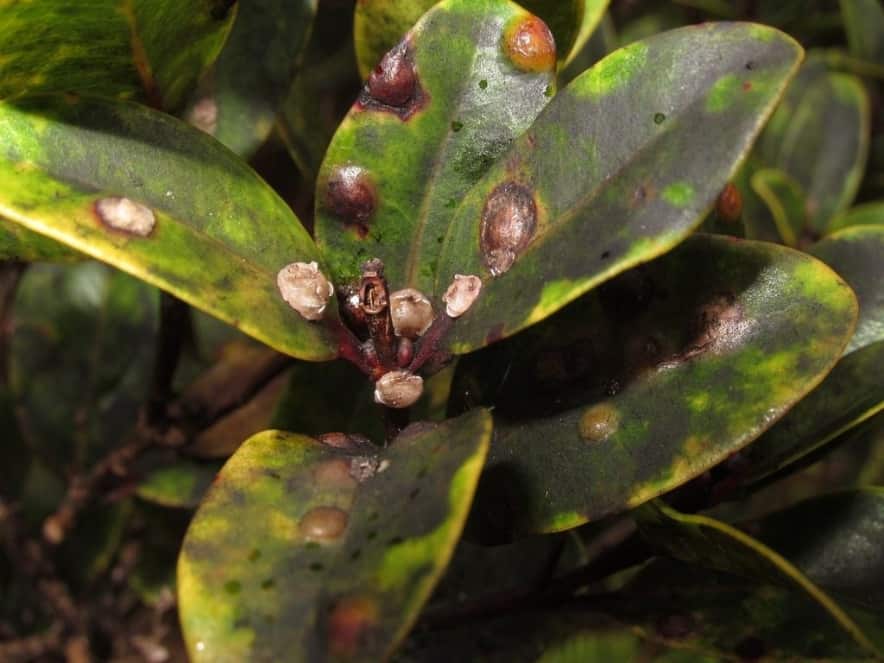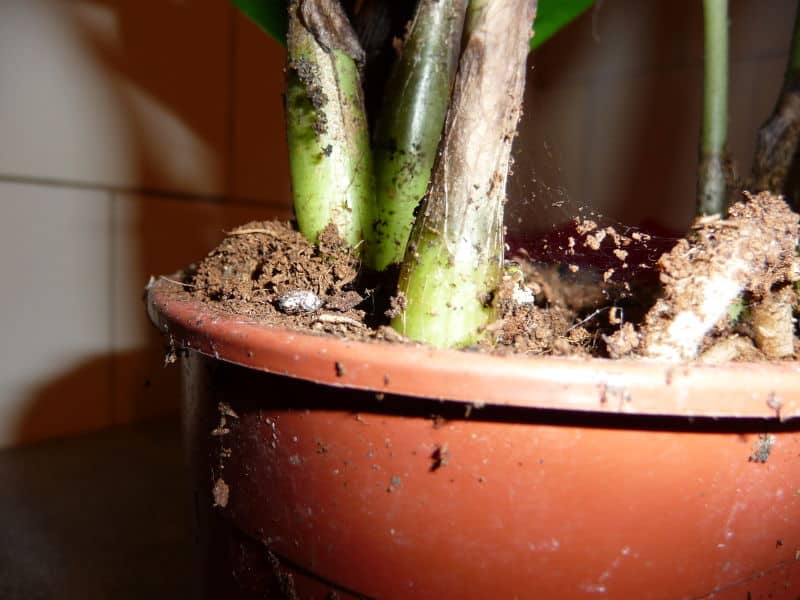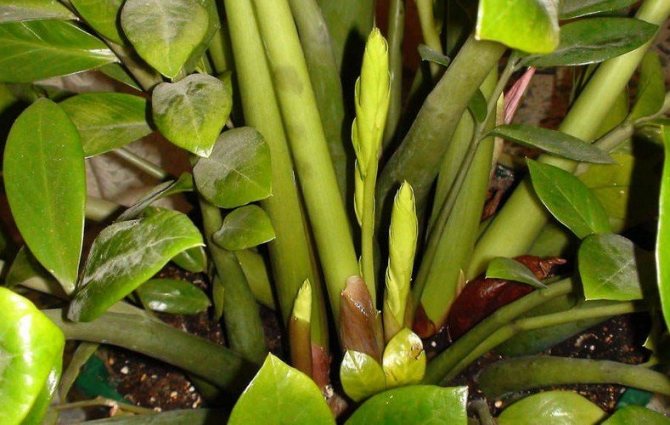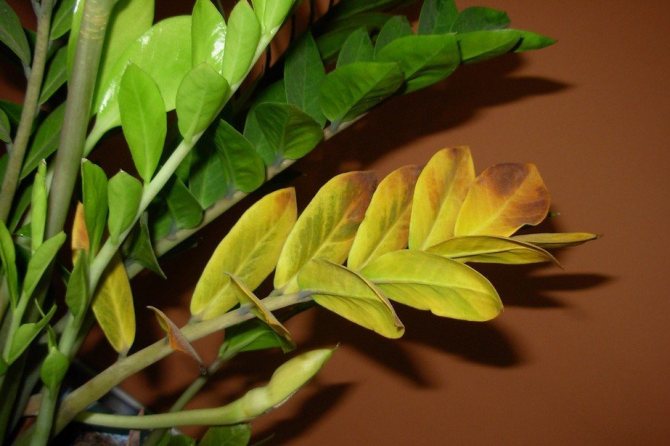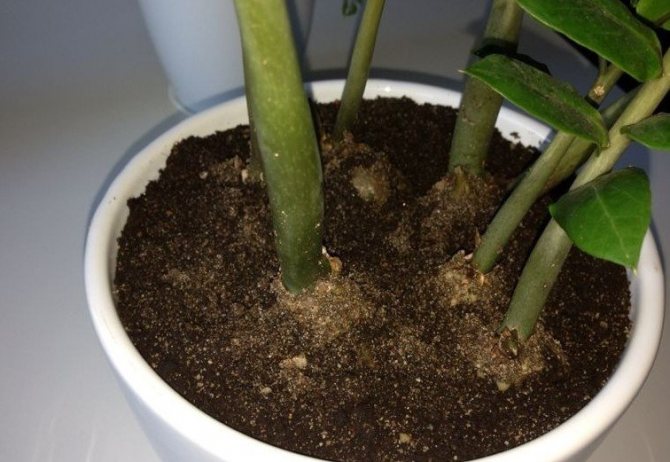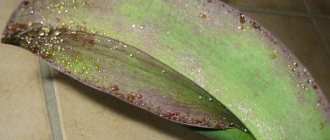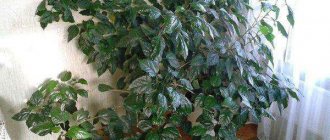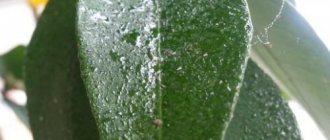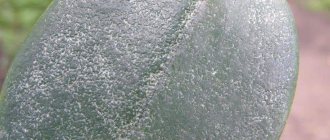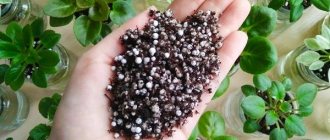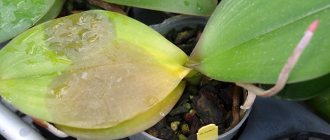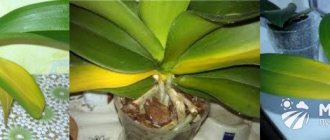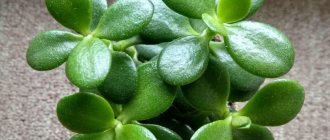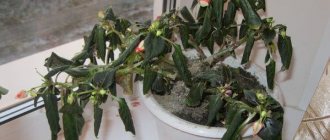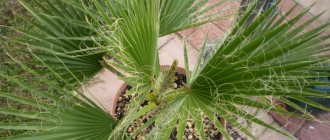Not taking into account the biological characteristics of the culture, the florist runs the risk of facing a situation in which the unhealthy zamiokulkas signals yellow spots, drying tips of leaf plates, loss of elasticity and juiciness of the stems. The longer the plant is in uncomfortable conditions, the more serious the consequences and external signs of malaise.
If the rules of home care are not followed, the zamioculcas turns yellow, the number of leaf lobes decreases, their color becomes visibly paler. But a lack of attention threatens not only with the loss of decorativeness, but also with rotting of the root system, the base of the shoots, their drying or wilting due to the attack of pests.
Soil composition or improper planting is to blame
If there are no visible diseases on the plant, the cause of poor development should be looked for in the growing conditions or caring for the dollar tree. In nature, the flower grows on rocky soils of the East African deserts, so heavy clay soil, even the most fertile, is not suitable for its comfortable state.
For planting succulents, a generous proportion of sand should be added to the substrate to ensure proper looseness and breathability. The optimal components for the soil mixture in which zamiokulkas is to be grown are garden soil, humus from fallen leaves and coarse river sand, taken in equal volumes.
Lack of drainage at the bottom of the flower container leads to stagnant water and, as a result, poor growth. The roots, constantly "floating" in the water, will gradually begin to rot. A plant with a dysfunctional root system weakly or does not build up its aboveground green mass at all.
Zamioculcas develops poorly and is too deep during transplantation. The tubers should be positioned so that they are barely covered with soil, and the root collar remains at the level of the soil surface.
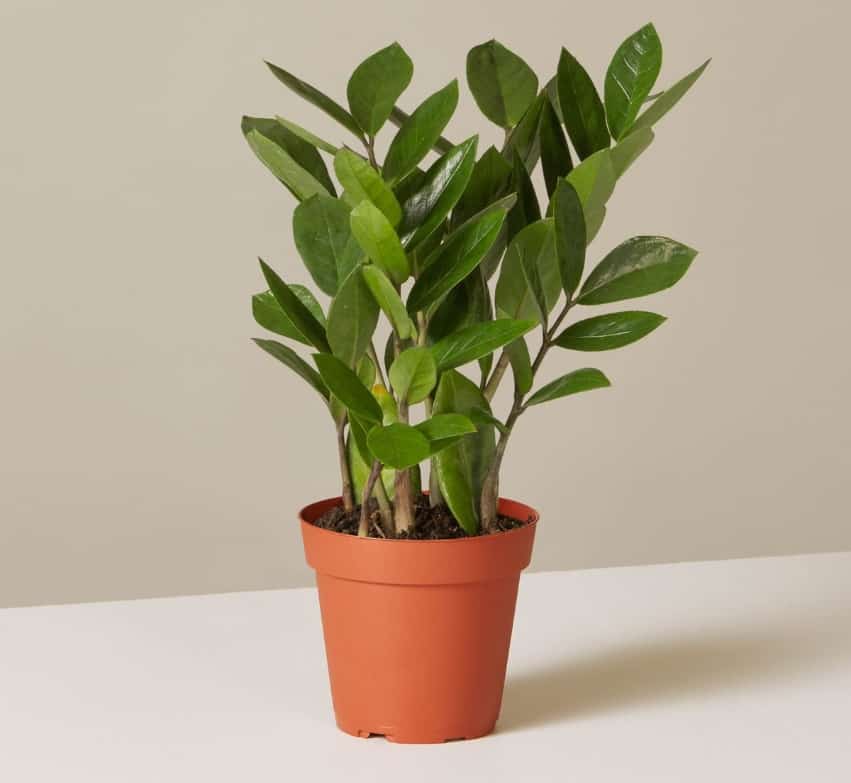
Transfer
Like any plant, it experiences stress during transplantation, from which it departs for about a month. Therefore, after transplanting, leaves often fall off, and the growth of new shoots stops. Usually after a month he comes to his senses and begins to build up a new green mass. To make the flower less damaged, the transplant is done in a transshipment method.
A young plant is recommended to be transplanted into a larger pot every year, and from the age of five - every three years. It is better to grow it in a mixture for cacti, which consists of fertile soil and sand in equal parts. There must be a small drainage layer at the bottom of the container.
Unsuitable flower container
The reason for the poor growth of zamiokulkas can be completely commonplace - the pot for its cultivation is incorrectly selected. In a too cramped container, the roots have nowhere to develop.Often, the owners of the dollar tree observe a phenomenon - a plastic vessel in which a succulent grows begins to swell like a barrel. The tubers of the plant have considerable strength and are able not only to deform the container that has become small, but also to completely destroy it. It's time to transplant the plant into a larger diameter pot.
However, do not rush to choose a vessel that is too spacious. Often, after transplanting, the owners of zamiokulkas complain - instead of gratefully accepting fresh nutrient soil and adding in growth, the plant freezes in place for a long time. In a large pot, the flower first grows roots and tubers, and only then releases new leaves.
Therefore, so that the dollar tree after transplanting does not slow down its growth, the pot should be selected only 2-3 cm more in circumference than the previous one, otherwise you will have to wait a long time for new leaves.
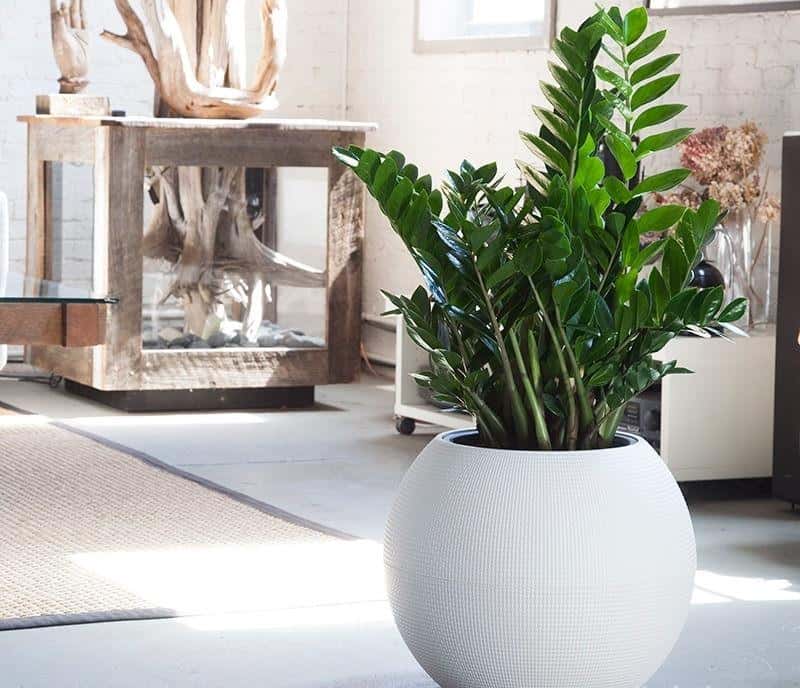

Description
Indoor flower with a difficult to pronounce name zamioculcas has only recently become widespread. People call it the dollar tree, as it is believed that it brings prosperity to its owner. Possesses thick tuberous roots and glossy dark green foliage. On average, the bush grows up to a meter in height. Sometimes inconspicuous light cream inflorescences bloom on it.
It is quite simple to look after him, he easily tolerates low air temperature and twilight in the room, but for good development he still needs a brighter place. Its root system does not like frequent watering. If it is still flooded, then a magnificent plant will be saved only by transplanting into a new pot with fresh soil. Since it is poisonous, the transplant or trimming of the top is carried out only with rubber gloves.
Usually from November to February, he hibernates, at which time his vegetation is suspended. If the dormant period has long passed, and new shoots and leaves are in no hurry to grow, then it is worth checking whether the care is being taken correctly.
The most common causes of delayed flower development are:
- Improper watering.
- Lack of lighting.
- Overfeeding.
- Dry air.
- A cramped or spacious pot.
- Diseases and pests.
After the successful elimination of these above-described reasons, beautiful young shoots with pinnate leaves will soon begin to grow in the zamioculcas.
Lack of nutrients in the soil
Some growers, having bought a plant in a store, are in no hurry with a transplant, and then ask the question - why does the zamiokulkas look healthy, but its leaves are some kind of light green, not rich emerald, and does not grow at all?
The reason is the following - suppliers plant all their products in poor soil and maintain the viability of the transported plants with nutrient solutions. If the dollar tree stays in the store, it is simply depleted from a lack of substances necessary for a normal existence.
Such an acquisition is immediately transplanted into a fresh substrate and a rational feeding regime is applied for it, so that the plant recovers from stress and actively develops.
Insect pests
Not a single indoor flower is immune from pest attacks. Therefore, during each watering, you need to carefully examine the entire green mass, paying special attention to the underside of the leaves, where insects often like to hide.
- Spider mite - A spider web on the leaves, barely perceptible to the eye, testifies to its presence. You can get rid of it with any chemical, for example, Demitan or Neoron. But many growers prefer to get rid of it with a soapy solution. To do this, dilute 100 grams of laundry soap in a liter of water, then carefully wipe each part of the flower with a sponge dipped in this solution.Before this, the soil is covered with plastic wrap so that the solution does not get to the roots. After a week, the procedure is repeated until the spider mite disappears completely.
- Scabbard - It appears as raised, sticky specks on leaves and stems. You can get rid of it with the help of effective insecticides "Aktara" or "Actellik". Before using them, use a sponge to manually wipe the affected areas.
- Aphid - It multiplies very quickly, it is dangerous because it sucks out all the nutritious juices from the greenery. The entire top must be treated with "Fitoverm" or "Fufanon" or wiped with a sponge dipped in soapy water. Repeat the procedure if necessary.
- Thrips - Looks like a silvery bloom on the leaves. You can get rid of them with the help of Aktara and Fitoverm preparations.
- Mealybug - Appears as a fleece on the stems. They often arrange their nest in the rhizomes, therefore, at first, they carefully examine the roots of the plant, if necessary, cut off their affected parts. Then they are transplanted into fresh soil, and the top is sprayed with Aktellik or Fitoverm.
Bad placement
Zamioculcas is a light-loving plant and prefers to live in well-lit places, although it tolerates well with penumbra. But flower growers notice that the leaves of such a flower stretch out and brighten, and new ones either do not appear at all, or come out with fewer lobules on a long petiole.
There is a lack of lighting, which must be eliminated by moving the plant closer to the window or organizing artificial lighting in winter on short daylight hours.
Zamioculcas does not grow if it is constantly in a draft, although fresh air welcomes, at a close distance from a cold window or next to a constantly opening window.
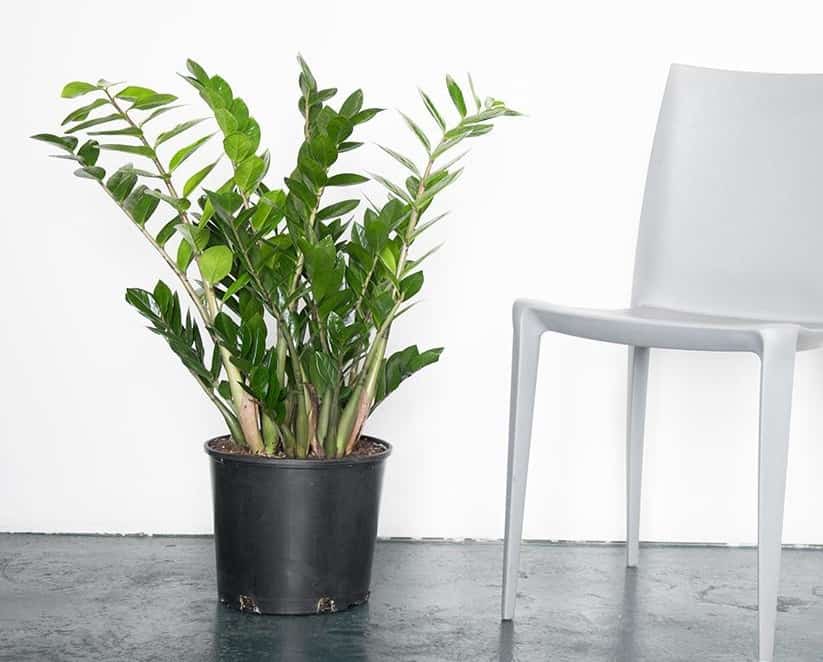

Zamioculcas for home cultivation ...
If you don't have enough time to take care of indoor flowers, but you want beauty, then the most suitable option is to have a zamiokulkas. Reputed to be an "unkillable" plant, unless, of course, it is flooded. It does not need a lot of light or moisture, it can grow in dry air and even in winter, but it immediately dies from a small overflow. It grows poorly in heavy soil and with frequent moisture. Watering is especially dangerous in winter during low light periods. Otherwise, it is extremely unpretentious.
Useful tips for those who are just learning to care for a zamiokulkas flower - compliance with watering standards, temperature conditions, lighting, correct fertilization ...
Consequences of violation of the irrigation regime
Overflowing on the dollar tree affects, if not the next day, then after two days it is necessary - the leaves turn yellow or become covered with brown spots.
The lack of irrigation moisture is not immediately visible. The plant looks like healthy, but no growth gains are noticed. Only over time it becomes obvious - the stem of the zamiokulkas wrinkled.
This happens for this reason - once there was a long overdrying of an earthen coma. Watering was resumed, but the earthen lump became "stone-like". The roots in it are like in a dungeon - neither air nor moisture reaches them. It seems that watering is normal, but the water simply flows down into the space between the lump and the wall of the container, and the substrate does not even wet.
Soldering will help well in such a situation: the pot is immersed in a container with warm water and left for half an hour or more so that the entire soil mixture gets wet. Then the plant, along with the flower container, is taken out, left for a few minutes and waiting for all the water to drain. Another way out is a warm shower, which growers with experience in growing zamiokulkas arrange constantly.
However, after all the manipulations, you should still think about replacing the substrate, which clearly lacks looseness and moisture permeability. Most likely, little sand was added during the transplant.
Sometimes a rare phenomenon is observed - tears roll down from the tips of the sheet.Why is Zamiokulkas crying? This really does not happen often, because its cause is high humidity, which is not typical for ordinary apartments. Nevertheless, the plant is not used to a humid and stuffy environment, it is unlikely to like such conditions, and the dollar tree will not show much zeal for growing green mass.
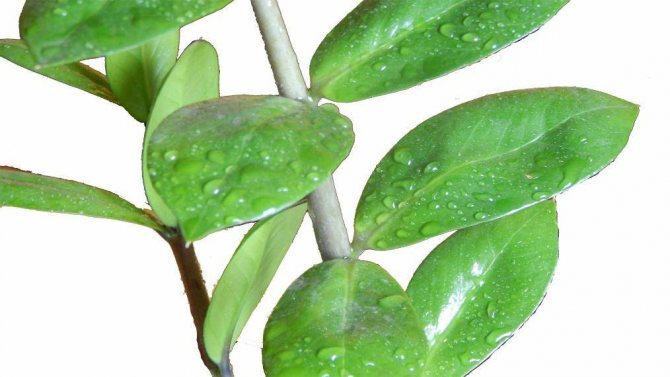

Potassium - its role in the growth process
To balance the nutrients, it is enough to add wood ash a couple of times a season. It is generally accepted that potassium is mainly loved by lush flowering plants. Zamioculcas is not one of these, therefore, organic potassium is enough for him, and even then not often.
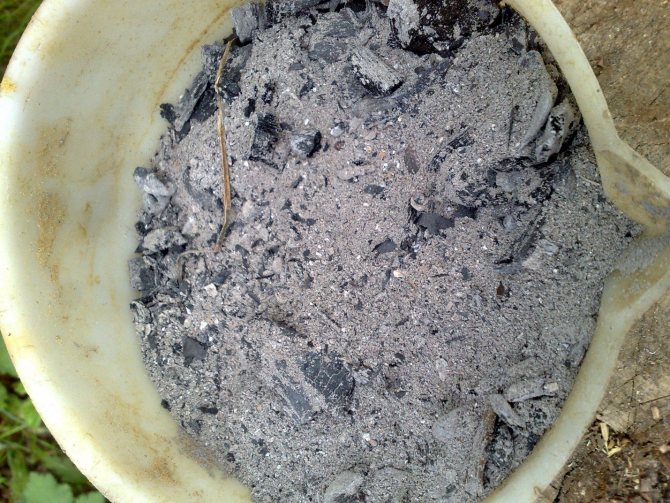

Before making the ash, it is poured with water and kept for 3 - 4 days, then watered under the root. During the summer, you can water 2 - 3 times with interruptions for 1 month. To accelerate the activity of bacteria, biological products are used.
The presence of pests in the soil
Pesting indoor fauna is also one of the reasons why zamioculcas does not give new shoots. Visible parasites - scale insects, thrips, spider mites, sucking juices from the plant, immediately begin to exterminate. But sometimes there are those in the pot that cannot be noticed during the day.
They appear at night or even live in the ground and feed on the juice of young roots. These are the larvae of mealybugs and sciarids - flower midges; they live in the ground and woodlice. All of them start in conditions of high humidity and, first of all, you will have to reconsider the irrigation regime in the direction of reducing its abundance and frequency.
But this, most likely, will not be enough, and you will have to remove the plant from the soil, thoroughly rinse the root system and look for the reason for the poor development of zamiokulkas in it. If pests are to blame, take measures to destroy them; the consequences of overflow must be dealt with with the help of fungicides.
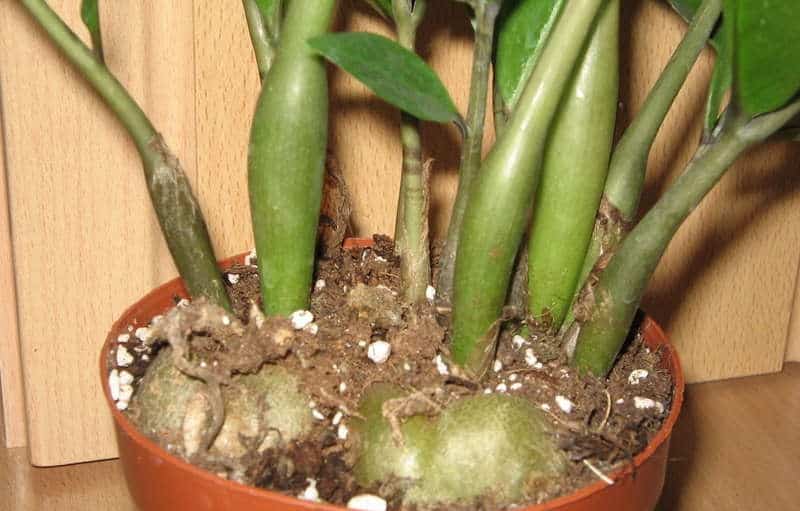

flora-
Phosphates - their role for the growth of zamioculcas
For the full assimilation of nitrogen, it is necessary that there is enough phosphorus in the soil. It can also be organic or mineral. If zamiokulkas grows at home, than to feed in order to maintain a balance, they are guided by the availability of fertilizers in stores for gardeners. It can be bone, phosphorite or fish meal, superphosphate or complex fertilizers, for example, Azophos.
Organic phosphorus takes longer to dissolve in soil. For its transition to an assimilable form, a slightly acidic reaction of the soil is needed, otherwise the plant will not be able to use phosphorus. Norms are usually indicated in the instructions. Mineral fertilizers are used strictly according to the rules so as not to overfeed the plants. Organic matter is not calculated so scrupulously, since it breaks down gradually.
Botanical characteristic
The herbaceous plant has a thick tuberous rhizome and glossy, dark green, complex-pinnate foliage. The average length of the leaves reaches a meter... The leaves are swollen at the base. Less than ten years ago, breeders obtained a miniature cultivar of the plant, represented by a compact bush no more than 0.6 m high, with small foliage.
Zamioculcas are unpretentious plants and easily tolerate low air humidity, as well as partial shading. However, for full growth and development, the plant needs bright rooms and the absence of direct sunlight. Ornamental culture does not react well to excessive soil moisture and moisture stagnation, therefore, irrigation measures need to be strictly regulated. If the houseplant is heavily flooded, it means that it will not be possible to easily save the ornamental culture, and a whole range of restorative measures will be necessary.
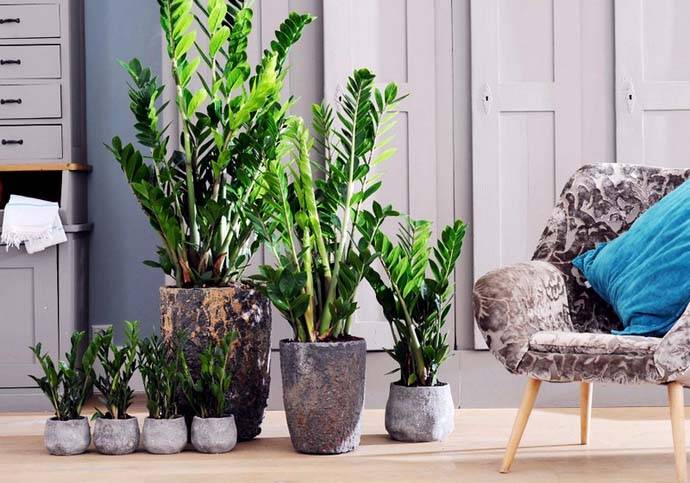

There are no special requirements for the soil composition of zamiokulkas, therefore, the houseplant grows well in self-made soil based on sod, leafy soil and medium-grained sand, which are mixed in a 1: 1: 1 ratio. The culture can be propagated by dividing the tuber, as well as by rooting a leaf or a separate leaf plate.
Inflorescences of zamiokulkas are hardly noticeable and not too decorative, they are light cream cobs, formed on shortened and thick peduncles. The inflorescence is surrounded by a light green veil. In home floriculture, zamiokulkas bloom extremely rarely. It should be noted that the plant is poisonous, therefore, when transplanting and pruning or forming branches, as well as dividing the tubers, you need to take increased precautions using rubber gloves.
Types of fertilizers for zamiokulkas
Before using the drugs, you should remember that it is necessary to feed the culture on a moist soil. The alternation of organic and mineral products is the optimal solution when processing a plant.
Organic
Organic fertilizing is effective for fertilizing zamiokulkas. It is recommended to use the following types:
- Manure or bird droppings.
Fresh material is poured into a container by 1/3, water is poured at room temperature. After 4 days, stir. The working solution is prepared by adding water in a ratio of 1:20 for manure or 1:25 for droppings. The composition is used for root feeding.
- Compost.
The mixture is used in the form of mulch. The finished product should be laid out on top of the soil covering of the pot in a layer several centimeters high.
- Sapropel.
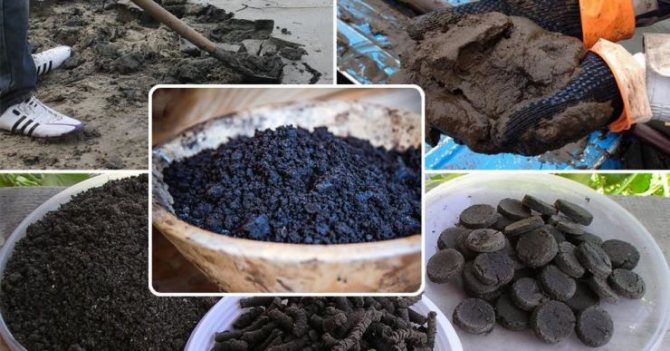

Lake silt is sold in specialized stores in granular or liquid form. Before adding it is mixed with earth in a ratio of 1:10.
- Wood ash.
The substance is used dry or dissolved in water. It must be introduced into the soil at the rate of 2 tbsp. l. for 1 kg of soil, mix thoroughly. To prepare the solution, add 6 tsp to 1 liter of liquid. ash, leave for 7 days. Water the plant at the rate of 100 ml of the prepared composition per liter pot.
- Sawdust.
This material is introduced into the soil as mulch.
- Peat.
The rock is scattered over the soil surface in a layer of 5-6 cm, mixed with the upper layer of the earth.
Does not give new shoots
The main vital organ of any plant is the root system, which in the zamioculcas includes a large tuber and the actual roots growing from its apical part. At the first stage, the plant assimilates the volume and fills the flower pot, after which the tuber that stores moisture is built up. During this period, there is no development of the aboveground part of the plant.
Among other things, zamioculcas is a southern plant, therefore, the activation of growth processes, accompanied by the formation of new shoots or stems, begins quite late and continues until the last decade of winter. Shoot formation is observed in the so-called reserve buds, and the density indicators of an adult ornamental bush are directly proportional not only to the size, but also to the number of tubers.
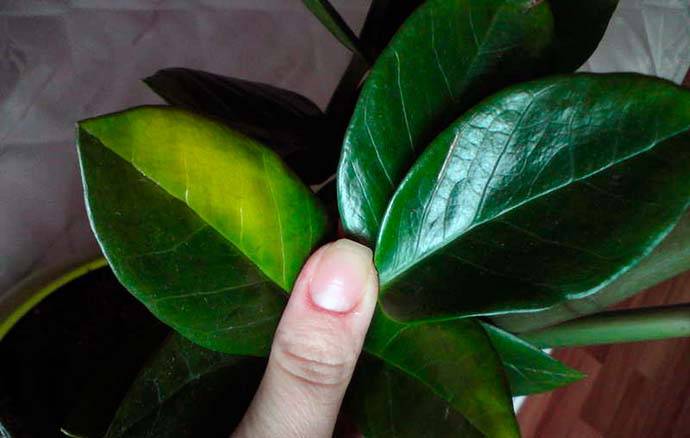

General tips for growing zamiokulkas
In order for a houseplant to be healthy and have a beautiful appearance, it is worth adhering to the recommendations:
- Watering and humidity should be moderate.
- Provide bright lighting, if necessary, move the plant to another, more suitable place.
- Fertilization with organic matter and mineral supplements should alternate.
- Processing is carried out in spring and summer, in autumn it is minimized, in winter it is not carried out without urgent need.
- Fertilize not only the root system (tubers), but also the aerial part of the zamiokulkas.
- Transplantation and reproduction occurs every 3 years.
The plant dries up
When growing zamiokulkas, it is very important to take into account the biological characteristics of this southern ornamental culture, since otherwise the plant becomes ill, and unhealthy zamioculcas manifests itself in the appearance of yellow spots, drying of the tips of the leaf plates, loss of elasticity of the stem part... Failure to comply with agricultural technology causes yellowing, a decrease in leaf lobes and blanching. Such problems threaten not only a complete loss of decorativeness, but also the death of the plant.
Sometimes dark spots appear on the aerial part of the plant. The reasons for this phenomenon can be represented by a too wide range of temperature indicators in the growing room, the negative impact of drafts and abundant watering of zamiokulkas. To rid the plants of stains on the foliage, it is necessary to completely eliminate the presence of negative and traumatic factors for the ornamental plant, including a change in the regime of irrigation measures and temperature changes. It is important to remember that the appearance of dark spots on the foliage may also indicate damage to the ornamental crop by plant parasites.
Dark spots
One of the most common among them is dark spots on the tree trunk. They can be caused by a variety of reasons, respectively, the methods of treatment and prevention also differ.
The reasons
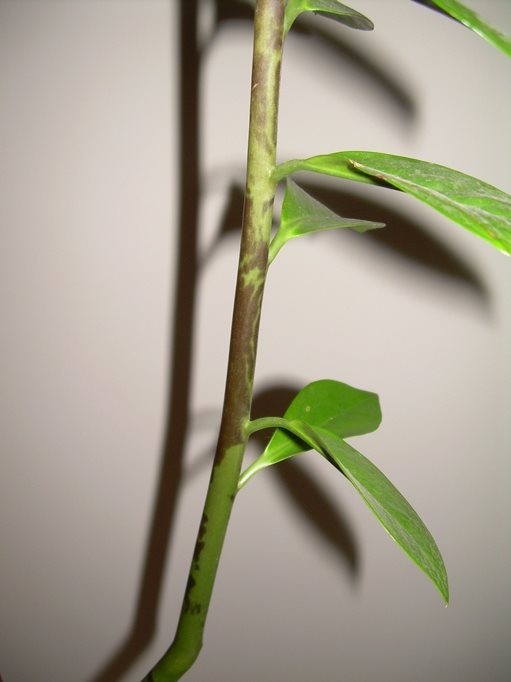

Large spots often appear when the temperature is too cold for growing zamioculcas.
- Flower feature... If dark spots appear on the flower, but this process is not accompanied by decay, it is likely that we are talking about the individual characteristics of the plant.
- If the tree is present at least 15 adult yellowed leaves, while there are new shoots nearby, there is no particular reason to worry. This can often be observed if the plant goes through the rejuvenation stage. In this case, it is enough just to remove the leaves after they are completely dry.
- If traces of rot are found, certain measures should be taken, as this indicates the presence of some kind of disease... The first thing to do is to treat the stem of the plant with any antiseptic. In addition, if required, you can replace the soil.
Other diseases
Many diseases of ornamental culture are the result of improper care. Excessive watering can reduce oxygen supply and reduce soil drainage, which makes full nutrition of the root system of an ornamental crop impossible. The roots begin to rot and nutrients are not supplied to the plant, which causes the stems to weaken. Thin and emaciated stems descend quickly. Also, thin trunks of zamiokulkas grow in low light. There are situations when the trunk disappears, but the plant can still be saved and as a result of compliance with agricultural technology, new shoots appear from the underground part.
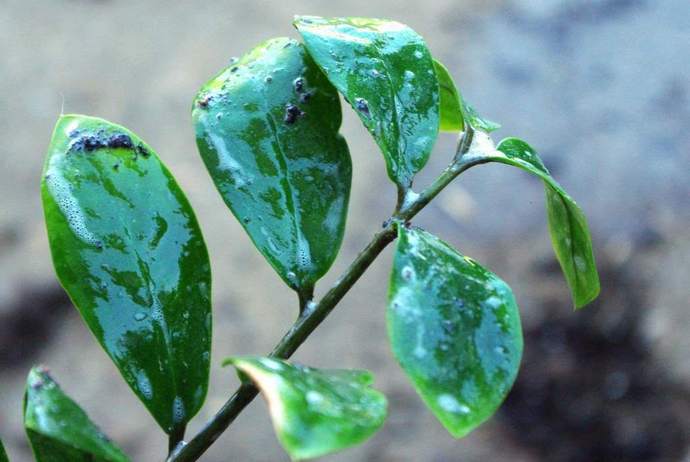

If the zamioculcas has a shriveled stem due to systematic waterlogging, then it is necessary to carry out the following activities as soon as possible:
- carefully remove the houseplant from the flower pot;
- carefully, but very thoroughly, remove the soil mixture and rinse the root system;
- remove all damaged areas of the root system with a clean and sharp garden tool;
- all sections of the cuts must be sprinkled with chopped charcoal and dried.
If, during the processing, signs of rotting or fungal infections are found, then it is very important to use fungicides when processing the root system. Foliage yellowing can occur as a result of a natural, age-related aging process in which only the lower foliage falls off. The almost complete loss of foliage is most often the result of improper care and mechanical damage.
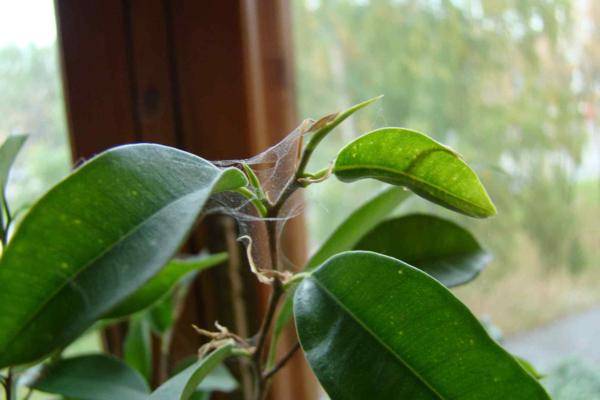

Watering
Zamioculcas does not have the usual roots, like many indoor plants, but corms that do not like excess moisture.Moreover, it can do without moisture for more than two weeks. Watering it too often will cause the roots to rot, leading to yellowing and dropping of all foliage. Therefore, watering is done only when the earth is completely dry. But if watering is done very rarely, then new shoots will not grow, and the leaves will turn yellow and fall off. Watering is usually done weekly.
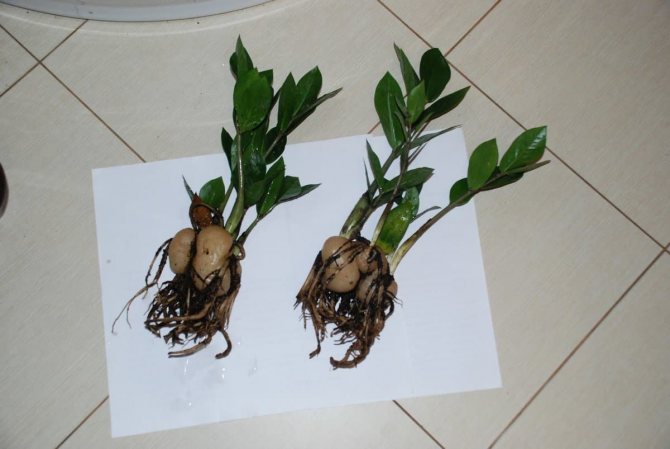

Plant pests
One of the most common problems in growing such an exotic plant as zamioculcas is yellowing or a change in the appearance of the foliage of an ornamental crop as a result of damage by plant parasites. The most dangerous pests are spider mites, scale insects and aphids.
When infested with spider mites a thin cobweb forms on the foliage and stems. The fight against this plant parasite can be carried out with water or a physical method, as well as treatment with "Anti-mite", "Zircon" or "Agravertin".
When damaged by a scabbard on foliage dark spots and yellowness may appear. This type of plant parasite is characterized by a fairly rapid reproduction, so manual collection is not always effective and expedient. In this case, it is advisable to use insecticides.
The indoor plant zamioculcas is a popular flower among gardeners. It belongs to the aroid family. It is located in the wild, mainly in areas of Africa (eastern region), which fully justifies its care needs.
Zamioculcas can develop normally in intense drought, but it cannot survive the abundance of moisture. This and several other parameters in care are precisely responsible for the flowering of zamiokulkas. In today's article, we tried to highlight the main points of why zamioculcas does not grow and what to do in order to correct the situation. If questions about the care and improvement of the growth of zamioculcas remain relevant to you, continue reading.
Why is zamioculcas not growing?
A common mistake of flower growers is that they fill in zamiokulkas, so it does not grow. This plant can’t be overmoistened, otherwise it will die. Gradually, the development will stop, the tubers will stop developing, giving new shoots / shoots.
Forced darkening of zamiokulkas also affects its flowering. Since the plant came to us from a hot, sunny country, it would not be rational to shade it or keep it in partial shade. Zamioculcas loves abundant light and can withstand direct sunlight. Of course, in the summer, a weakened or young zamioculcas, artificially exhausted for a long time, can get sunburn. They appear as brown spots on the sheets.


In winter, you can safely leave zamiokulkas next to heating devices, since it also easily tolerates dry air and an increase in temperature - not a flower, but gold. It is not at all surprising that many flower growers love zamioculcas so much and are happy to keep it at home. In summer, you can briefly take the plant out to the balcony or display it in the garden so that it absorbs more sunlight.
Zamioculcas does not grow - what to do?
The reasons why zamioculcas does not grow at home can be rooted in improper plant care. Since it belongs to an aroid plant, flower growers may get the wrong idea about the methods of care and the needs of the flower.
What to do if zamioculcas does not grow - take into account the needs of the plant:
- It is not necessary to water the zamioculcas often - it collects moisture, which is enough for it for a long time;
- The tuber rots or problems begin with the leaves of the plant if the air in the room is waterlogged;
- With sudden changes in humidity or air temperature, zamioculcas can inhibit development or growth;
- Moderate watering: dry potted soil, periodic breaks;
- Reducing watering in autumn and winter (if the air temperature is below 15 degrees);
- Intensive care during growth and flowering: from April to August;
- Annual transplantation, otherwise the tuber of the plant inhibits growth (of course, the soil mixture must be selected according to all standards);
- Checking for the presence of parasites and their timely removal;
- Correct fight against bacterial infections - do not start until the growth of zamiokulkas or leaves fall completely;
Dry air
Although it is not a moisture-loving flower, it does not tolerate dry air very well. Therefore, during the heating season, it is rearranged away from heating appliances. In hot summer it is advisable to spray it at least once a month, or even better, just wipe its leaves with a slightly damp cloth, since excess moisture on the greenery can lead to dark spots and rotting. And you need to make sure that the air in the room is not too humid, which is more destructive for him than dry air.
Diseases and pests
Yellowing and withering leaves are not always an indicator of zamioculcas disease. If the plant continues to release new leaves, then it is healthy. Old leaves are pruned after complete drying.
If the leaves turn yellow, dark dots have appeared on the stem and there are no new shoots, then the plant is carefully examined. The causes of diseases are frequent drafts, sudden changes in temperature and excessive watering. Often it is exposed to pests.
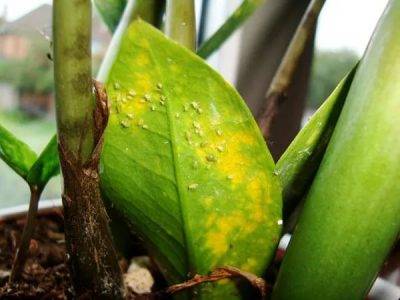

Common plant diseases are presented in the table:
| Signs of illness | Probable causes | Treatment |
| The plant does not give new shoots after flowering | Natural aging of the plant, frequent soil moisture, low room temperature | Watering only after complete drying, a warm place, removing young plants instead of an adult. It multiplies faster when dividing tubers. Fertilizing the soil with solutions containing nitrogen. Top dressing during the period of active plant growth from April to September is performed once every 2 weeks. During flowering, the number of fertilization times increases to 2 per week. In the period from October to March, the plant is not fertilized. |
| Yellow and dark spots on leaves in spring or summer | Sunburn, dry soil | Choosing a bright place without prolonged exposure to direct sunlight, balanced soil moisture |
| Leaves turn yellow and dry in winter | The plant is near heating appliances | Remove the plant from heating devices |
| Leaves turn yellow and fall | Stagnation of water in the roots, the appearance of rot on them | Remove the roots from the pot. Wrinkled (waterlogged) treat in a weak solution of manganese. Cut off the rotten parts of the root, cut the cuts with crushed coal. Plant the plant in fresh soil, be sure to use drainage |
| Wet spots on the leaves, rot on the stems | Waterlogged soil at low temperatures, lack of drainage and heavy soil | Reduce the frequency of watering, choose a warm place for the plant, and eliminate drafts. The next step is to examine the roots and soil. Treat the affected roots with a solution of an antifungal agent. Dispose of the existing pot together with the soil to exclude the recurrence of the plant disease. Carefully select the soil for planting. When cooking on your own, exclude high clay content. Be sure to create a drainage layer to prevent waterlogging of the roots. |
| Pale and elongated foliage | Lack of lighting | Choose a location with enough light. If it is impossible, create artificial lighting using a special lamp for flowers. Its light is as close to natural light as possible |
Proper soil moisture and the choice of a warm and bright place are the key to health for zamiokulkas. Despite its resistance to pest infestation, the plant is susceptible to damage by scale insects, aphids, spider mites or mealybugs.When damaged by any pest, the plant has sticky leaves.
| Pest | Symptoms | Prophylaxis |
| Spider mite | The leaves are covered with white dots, entwined with a cobweb. There are many gray, green or brown ticks on them. Females are red. Pests feed on plant sap | Spraying with plain water or tobacco solution. For a tobacco solution, insist 1 part of tobacco in 10 parts of water for 2 days. Dilute the tincture with water 1: 3 |
| Aphid | Small gray, green or black bugs on the back of a leaf or on the crown of young shoots. They multiply quickly, feeding on the sap of the plant, they are able to destroy it completely | Using a soap solution with the addition of wood ash or nicotine sulfate (1 g per 1 L) |
| Shield | The leaves of the plant are covered with crimson tubercles, the larvae spread throughout the plant, feeding on sap | Wipe daily with soapy water, and also use a soap-tobacco solution with the addition of kerosene or alcohol for spraying |
| Mealybug | The leaves become sticky due to the white droplets left behind by the pest. In these places, the flower stops receiving oxygen, so the leaves quickly turn yellow and fall off. Individuals of the parasite are large black and easily visible | Spray the plant with soapy water as it is found. In severe cases, use chemicals |
| Thrips | Twisted stems, traces of excrement and silvery spots on the plant | The fight against such pests takes place only with the use of insecticidal preparations. |
Insecticidal agents are actively used in pest control. When using them at home, it is important to follow the rules of personal protection:
- Close your arms to the elbow.
- Use gloves.
- Use a gauze bandage on your face.
- After handling insecticidal products, wash your face and hands with soap and water.
With caution, toxic drugs are used in apartments with small children and animals.
Fertilizers and safety measures when working with them
The most popular among gardeners planning to organize proper plant care are the following types of fertilizers:
- Agricola. Top dressing with Agricola is done by root method. The fertilizer dissolves well in water, there is no chlorine in its composition, but there is a large amount of balanced macro- and microelements. 1 teaspoon of fertilizer is enough to dissolve in 2 liters of water. With careful care, watering is done every 10 days. When working with fertilizer, rubber gloves should be used, avoid getting the substance in the nose and eyes, and also do not mix it with other dressings. When using top dressing, it should be applied exclusively to the ground, taking care not to get it on the green parts of the plant.
- Agricola Aqua. The fertilizer is sold ready for use. The use of this substance allows you to enhance plant growth, accelerate flowering and make it longer, thereby providing better care conditions.
- Pocon. Top dressing is made in Holland, it is intended exclusively for cacti, but zamiokulkas also reacts very well to it. It is sold ready-made, which allows you to use it immediately after purchase. The substances contained in the feeding can be unsafe for pets and humans, therefore it is necessary to keep it in a protected place and use it with extreme caution when caring for the plant.
In flower shops you can buy other types of nutrient concentrates, the main thing is to use them as written in the instructions, otherwise you can harm the flower.
Proper care of the Dollar Tree.
The three most important conditions that Zamioculcas presents to its owner are soil, watering and capacity.
How do you care for your plant? Before expecting the corresponding return from the dollar tree, it is necessary to take proper care of it. The three most important conditions that Zamioculcas presents to its owner are - soil, watering and capacity... But first things first, let's let's start with the location. Zamioculcas needs diffused lighting, without direct sunlight. For this, east and west windows are suitable, as well as south ones, but with mandatory shading. In view of its huge size, it is possible to put a dollar tree in the back of the room, it tolerates shade well, but in winter it will be necessary to arrange additional lighting for it.
Zamioculcas needs sandy soil with the obligatory presence of stones in it.
The soil for Zamioculcas is the most important point that should not be ignored. He needs sandy soil with the obligatory presence of stones in it, because in natural conditions it grows on poor rocky soils. At the same time, the soil should be light and breathable; for this, perlite and peat can be added to the substrate. You can use ready-made soil for cacti (but in this case, I advise you to add expanded clay / pebbles / sand or even all together). Watering is the second important moment for Zamioculcas, because this plant can instantly die from overflow... He needs watering very rarely, and only when the soil is completely dry. Do not rush to water Zamioculcas, without watering it feels much better than in wet soil.
It is not necessary to spray Zamioculcas, it is enough to wipe the leaves with a damp cloth from dust, no more than 1 time a week
Also, the Dollar Tree needs a suitable container to grow well. If you think logically, then you can easily understand that he needs a container rather wide than deep, since the tubers (potatoes) grow strongly. However, try to select a container for him in size, not too spacious, but not cramped.
The dollar tree turns yellow: causes, methods of treatment, the main rules for care
Zamioculcas is a very hardy and thermophilic plant that can withstand prolonged absence of watering. Excessive grooming can even negatively affect his condition. Nevertheless, in order for it to feel comfortable and actively develop, it is necessary to provide the flower with certain conditions.
Despite the fact that zamioculcas does not require careful maintenance, he will never forgive negligence. The happy owner of a healthy exotic plant can only be a florist who knows that this plant loves diffused light and even in summer it is more demanding for regular feeding than for watering.
The indoor flower Zamiokulkas, also known as the dollar tree, belongs to the multitype genus of the Aroid family. There is one type - zamioculcas zamielistny. In its natural habitat can be found in tropical Africa. The name is associated with the similar characteristics of the zamia.
Differs in plasticity and unpretentiousness. Even a novice florist can easily grow it. In Taoist feng shui practice, the flower symbolizes wealth and prosperity. For this reason, the plant is often given as a gift for housewarming and birthdays.
Let's take a closer look at how to properly care for a flower and the main methods of reproduction.
The plant forms unusual flowers of a porous structure.
Lighting
The dollar tree loves diffused sunlight. But the flower does not adapt well to new conditions. Therefore, initially he needs to provide darkened conditions. Bright sunlight can cause burns. The leaves will be covered with yellow spots.
Temperature regime
Zamioculcas develops well and blooms in summer. Maintain the temperature at 25 ° C. In winter, the flower will need cooler conditions. Do not allow temperatures to exceed 16 ° C.In the cold season, you can move the flowerpot to the loggia, but only if the room is insulated.
Environment humidity
The flower can suffer from dry air. Therefore, spray the plant with warm, settled water every day. Place the container on a stand with peat, drainage, and moss. Add water to the pan. But do not let the roots come into contact with the liquid. The fleshy structure of the leaves allows moisture to accumulate.
In the cold season, protect the plant from the harmful effects of heating devices. Wipe the leaves with a damp sponge.
The plant is able to maintain its decorative effect in a dry substrate for about a week. You can safely go away on a business trip or on vacation. Needs abundant watering. But before the procedure, check the condition of the soil. It must be dry. Frequent moistening causes the tuber to rot. Avoid stagnant water on the stand and soil surface.
Transplant technology
The root system is very vulnerable. Includes several dense tubers. Careless removal can cause damage and subsequent death of the plant. Florists recommend replanting the dollar tree in three cases. Let's consider them in more detail:
- The plant is sold in shipping containers. The garden representatives use peat as a substrate. But do not transplant on the first day. Let the plant get used to new conditions.
- Young zamioculcas needs an annual replacement of the substrate and container. Prepare a larger container.
- Adult representatives of the culture should be transplanted only as the earthen coma is filled with roots. You can tell by the protruding roots from the drain holes. The best time to change the substrate and container is in early spring.
For the cultivation of zamioculcas, a container made of ceramics or clay is suitable. The root system is highly developed. Can break plastic container easily. Be sure to prepare a thick drainage layer.
You can purchase ready-made soil mix for cacti. It is quite easy to increase air permeability with fine-grained expanded clay. The plant is often damaged during transplantation. Therefore, it is better to change the container and substrate by transshipment.
Remove the zamiokulkas with the remnants of the earthen lump and place in the prepared pot. Make sure that the soil does not cover the top of the tubers (about 1 cm). The plant sap is poisonous. Therefore, always carry out the transplant in protective equipment.
Pruning
The plant does not need regular pruning. It is enough to periodically clean the dollar tree from wilting and dry areas.
The plant can be cultivated outdoors. In late spring, move the flowerpot to the balcony or terrace. Be sure to protect from direct sunlight, drafts and gusts of wind.
Hello! 2 years ago I was presented with a dollar tree and was told that the flower was a little whimsical to care for. In principle, until recently, everything was so. But about a week ago, the leaves on the dollar tree began to turn yellow a little. Now almost half of the plant is affected.
What does this mean and how to get your favorite flower back?
Zamioculcas is a representative of succulents, so problems with caring for it rarely arise.
A phenomenon such as yellowing of leaves in a dollar tree can be caused by several factors, ranging from improper care to lesions of various origins.
The answer is in nature
The dollar tree gained such popularity after the spread of feng shui teachings, according to which it is able to significantly increase the material wealth of its owner.
Although many home growers fell in love with it for its unpretentious living conditions.
But even those who, before breeding, responsibly approached the study of the necessary conditions and were able to create them, faced such a problem.
To make sure that this yellowing is really natural, you need to take a closer look at the stem. Simultaneously with the change in color of adult leaves, it will be possible to note the appearance of young leaves.
Do not forget that the sap of the plant is very dangerous, so do not remove the yellowed foliage yourself. Do not interfere with natural processes.
Waterlogging
Improper watering is the most common reason the dollar tree leaves turn yellow. With a large accumulation of liquid in the pot, the root system quickly begins to rot.
Please note that the rhizome of the dollar tree is represented by a tuber, which tends to stock up on a large amount of liquid. In addition, the stem and leaves, by their structure, also actively absorb and retain water. To avoid oversaturation with water, it is necessary to resort to watering only after the soil is sufficiently dry. It is optimal if the top 2–3 cm of the soil is dry.
With the onset of autumn, it is imperative to reduce the frequency of watering. At this time, the plant goes into a dormant state, it requires a minimum of moisture. The dollar tree stops intensive growth, so it will have nowhere to put energy and all excess moisture will weaken the rhizome.
This can be done using crushed coal, which you need to sprinkle on the tubers. Then select a container of the appropriate size, choose a soil for succulents and plant a flower.
The sooner the problem is detected and fixed, the more chances that the indoor pet will recover.
Lack of moisture
The reverse problem of waterlogging is rare, since the succulent tolerates well even a prolonged lack of moisture, feeding from its own reserves.
Some amateur flower growers, knowing how afraid a dollar tree is of overflow, forget to water it altogether. As a result, he has nowhere to take a source of energy.
When its own accumulation of moisture ends, the succulent loses strength and the leaves begin to turn yellow.
It is easy to determine that it was the lack of watering that caused the disease. In this case, the zamioculcas will look lethargic, the old leaves will turn yellow, and the new ones will wither without even opening. If you see such a picture, you should immediately establish the plant's watering system.
You will need to immediately add more water, but in the usual amount.
It is not recommended to pour the flower immediately strongly. The plant will take the right amount of moisture, and the excess will remain in the soil. Weakened and depleted tubers will not be able to properly resist rot, and you will have the opposite problem, which will be more difficult to deal with.
Drafts
This succulent is very sensitive to drastic climate changes and drafts. Failure to comply with the optimum temperature will lead to the fact that the leaves begin to change color evenly over the entire surface. If frequent drafts are to blame, then yellowing will only be observed from one side. It is on this basis that it will be possible to draw a conclusion about the cause of the plant disease.
What to do in this case? Move to a quieter location. Do not open windows if the flower is on the windowsill. Additionally, you can provide the plant with nutrition in the form of adding humus or special fertilizers for succulents.
Pests
Zamioculcas is a representative of resistant plants that rarely succumb to the attack of various pests. At the same time, cases were not excluded when insects and other unfavorable parasites passed to the flower from neighboring plants. Pest damage will be indicated not only by the yellowing of the zamiokulkas leaf, but also by their twisting, wilting.
Very small insects that can be black, dark green or gray in color. Prone to very rapid reproduction and distribution. To find it, you need to turn the leaf of the plant, in this place the aphid leaves whitish traces and cobwebs.
When the leaves turn yellow, does the plant still give young shoots? This means that everything is in order. This is a natural biological renewal process. Young leaves, possessing greater activity, take away all the necessary nutrients from the soil, leaving almost nothing for the more mature leaves. In this case, you should pay attention to the presence of dark spots on the leaves.
Dry spots don't give you any reason to worry, the plant is fine. It does not require any additional care and external intervention, but frequent and abundant watering can lead to yellowing of the plant. Reducing fluid volume may not always be the solution. Often it is necessary to take the plant out of the pot to examine it for rotting areas of the root system.
The plant can react to this with yellowed and falling leaves. Indoor species are more thermophilic than their wild relatives. They can react to absolutely any fluctuations, whether it be the wind blowing from an open window, a running fan or any heating device. In winter, when the room temperature rises, it is recommended to humidify the air.
Zamioculcas does not release new shoots. What can you do to make the Dollar Tree grow?
First of all, it is necessary to find out the main reason (there may be several of them) why Zamioculcas does not grow.
Zamioculcas does not grow due to an incorrectly selected container.
The very first thing that begins to develop in Zamioculcas when planting or transplanting is tubers and roots. The root system of Zamioculcas consists of tubers, and the roots themselves.
It is not for nothing that I talked about the proper care of Zamioculkas above, because improperly selected capacity can be one of the most likely reasons why the dollar tree refuses to grow... Let's go back to describing the roots of Zamik. Its root system consists of tubers, and the roots themselves. The tubers play a key role, they are like the heart of the plant. Therefore, the very first thing that begins to develop in Zamioculcas when planting or transplanting is tubers and roots. At this time, the aboveground parts of the plant do not grow. Now imagine that you have planted Zamioculcas in a huge pot "for growth." How long do you think it will take for him to grow the root system, and only then start growing? The fact of the matter is that it can take more than one month, and even a year (depending on the size of the container). In addition, in a large container, there is a possibility of flooding the plant. How to solve the problem? Simple - transplant the Dollar Tree into a pot by size.
An improperly planted Zamioculcas will not grow.
Correct planting of zamiokulkas assumes that the tubers of the plant are lightly sprinkled with soil.
Again and again, it goes back to the container. But it would seem that what else is needed if the pot is already in size? If your pot is too deep, then Zamioculcas may also not grow. Correct planting of zamiokulkas assumes that the tubers of the plant are lightly sprinkled with soil. The tubers do not need to stick out, but they should be close to the surface. It is very easy to check if you have planted Zamioculcas correctly. If the tubers are not visible, but felt, then you did everything right. How to fix? Transplant Zamioculcas without deepening the tubers.
Zamioculcas tubers are damaged and it does not grow.
If an infection has already entered the damaged tuber, and the process has begun, then you can only try to cut the potato to healthy tissue and be sure to sprinkle it with charcoal (ash or activated carbon).
Perhaps during the previous transplant, you damaged the zamiokulkas tubers, or you flooded the plant and the tubers began to rot. Is it possible to fix this? It all depends on the situation. If an infection has already entered the damaged tuber, and the process has begun, then you can only try to cut the potatoes to healthy tissue and be sure to sprinkle with charcoal (ash or activated carbon)... If rot is observed, then you can spill the soil with a solution of potassium permanganate or even soak the tubers in it for 20 minutes. There is no 100% guarantee that Zamioculcas will survive and grow, since he does not like various manipulations with both roots and tubers, however, you will increase his chances of survival. Better to do so and hope that Zamioculcas will survive it than watch him slowly die.
Zamioculcas lacks light for growth and development.
If you have a south window and Zamioculcas is not so far from it, then most likely the reason for the lack of growth is clearly not a lack of light.
The dollar tree is rarely seen on window sills, except perhaps even small specimens. Large plants are usually placed a little further from the window. Measure is good in everything. If you have a south window and Zamioculcas is not so far from it, then most likely the reason for the lack of growth is clearly not a lack of light. And if Zamioculcas is in the far corner in an obvious shadow, then the problem can be solved only by transferring it to a brighter place of deployment.
Zamioculcas needs nitrogen to grow.
Zamioculcas releases new shoots.
Many believe that since Zamioculcas belongs to succulents and cacti, then it does not particularly need feeding. No, it’s not like that. And succulents need them no less than ordinary houseplants, including zamioculcas. During the growth period, Zamioculcas requires a macroelement such as nitrogen. As a rule, with a lack of nitrogen, other plant symptoms are also observed and you need to know how to recognize them and how to apply fertilizers correctly?
Zamioculcas does not grow due to illness.
Zamioculcas is susceptible to diseases such as spider mites, scale insects, aphids and other pests.
Be sure to have cleaning days and inspect your plant. Perhaps Zamioculcas is sick, and therefore does not grow. It is susceptible to diseases such as spider mites, scale insects, aphids and other pests. Solution to the problem? Only complete treatment of the sick person will help, depending on the type of pest.
The rest period is the reason for the "fading" of Zamioculcas.
All of the above possible causes have been fixed, and the Dollar Tree still does not grow? The reason may be that Zamioculcas is in a dormant period, usually in winter. There is no need to take any action to correct this, it is a necessary physiological process.
Active growth!
flowers care.rf
Zamioculcas: features of care, reproduction, cost
Reproduction of zamiokulkas is carried out by dividing the tubers and rooting the leaves. It is almost impossible to propagate a plant by seeds, moreover, they are rarely found on the free market. And the seeds collected from home zamiokulkas, as a rule, cannot be called high-quality planting material.
Tubers
Most often, growers use the tuber breeding method. It is considered to be the simplest and most effective one. To propagate a dollar tree with tubers, you must adhere to the following instructions:
- The roots of the flower are removed from the pot and cleaned of the earth.
- Make a neat division of the root system. If necessary, cut the tubers with a sharp knife.
Zamiokulkas tubers can be cut, but after that they must be treated with a fungicide and sprinkled with crushed charcoal - Sections are treated with a 2% fungicide solution. Activated carbon is crushed and a fresh cut is sprinkled with the resulting powder.
- Parts of the treated tubers are dried in the open air for 24 hours.
- Plants are planted in the ground. Watering is temporarily replaced by spraying.
- The pot is placed in a warm place with a temperature of about 25 ° C.
Often, a young growth of zamiokulkas is formed in a pot. During transplantation, in most cases, it is easy to separate it from the mother tuber and plant it in a separate pot.
Leafy cuttings
A less common breeding option for zamiokulkas is with the help of leaf cuttings. For this, the following procedure is carried out:
- With the help of a sharp knife, a healthy leaf is cut, the cut must be done at an angle. You can root the entire complex leaf as a whole, or you can root small leaves separately.
For reproduction, a strong leaf of an adult healthy zamiokulkas is chosen. - The section is dried in air for 24 hours.
- Mix the drug Kornevin and activated carbon powder. The resulting mixture is treated with a cut, a stalk or leaf is pressed into moist soil.
- Create a greenhouse environment. To do this, cover the pot with a handle with glass or foil. It is important to maintain a constant temperature around 22 ° C.
- It is important to provide daily spraying and ventilation for ten minutes before roots emerge.
- Within three months, a root system should appear in the form of small tubers, which will give new shoots.
After 90 days, small tubers are usually formed on the rooted leaves. - Young dollar trees are transplanted in individual containers, following the usual planting rules.
Pruning
What could be the reasons for failure?
- At the initial stages of development, a succulent can produce only one - two new leaves per year, since the plant first of all in its life gives preference to tubers, which should develop well. And only after about 5 years, the bush can please you with its flower. But even then, at home, it is very difficult to achieve its flowering. And the flower itself is too ugly.
- The second reason for poor growth can be excessive watering of the flower. The soil must be completely dry before watering. Also make sure the flower is planted in a suitable soil. Zamioculcas loves stony soil, because in nature it grows where there is very little land. It should be dense, with grains of sand, and at the same time water and air should penetrate well into it. The root is designed so that you can actively accumulate moisture in itself, so the lock can easily do without water for a long time.
- The third reason why zamioculcas does not grow may be in poor conditions, for example, insufficient lighting for a flower or a small pot volume. The optimal or comfortable temperature for the castle is considered to be in the summer period from 25 ° C to 30 ° C, and in the winter - in the range from 15 ° C to 20 ° C. It is desirable that the plant gets sunlight, but not too bright. Staying the dollar tree on the north side of the house slows down its growth. As soon as the tuber fills the entire pot, it must be transplanted. There is no need to wait for the root to bulge out of the pot, because this way it cannot avoid injury. However, the plant should not be planted in a very large container. It is better to plant it in a pot, the volume of which does not exceed the size of the flower's root system.
- Also, a damaged root can become the reason that an exotic handsome man does not grow or has lost its beautiful appearance. The tuber can be injured during transplanting if you were not careful. Or it was damaged while in a small pot. Infections can very easily penetrate such a root, which will also negatively affect development and growth.
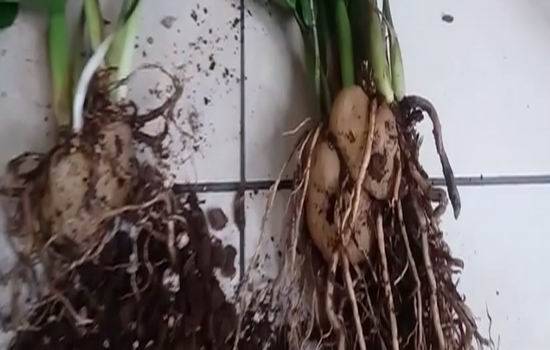

The indoor pet loves spraying on the leaf, but root feeding should not be neglected. However, don't overdo it. Spray the bush with fertilizer no more than once every two weeks, alternating with regular watering.
Helpful care tips
The dollar tree is a very practical houseplant and is easy to maintain.
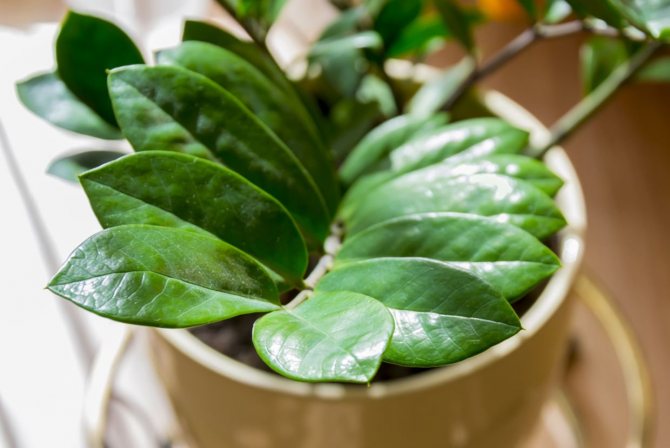

It is enough to use the general advice of experienced florists:
- the flower feels good in hot conditions, but do not forget to spray the foliage with water from time to time and wipe with a damp sponge from dust;
- when breeding by dividing the bush be sure to dry the cut well before planting it in the soil;
- Zamioculcas feels best in the sun, therefore, for its placement, it is recommended to choose the most illuminated room;
- if the plant withers and looks sick, you can remove it from the pot, rinse the roots with a weak solution of potassium permanganate and transplant it into new soil.
The flower as a whole has a very strong immunity and is able to recover even after a long illness.
Did you know? Zamioculcas became a home flower only in the 20th century. Prior to that, it was considered unsuitable for indoor keeping, unlike most modern indoor plants, which were mastered back in the 18th century.
So, a close acquaintance with the zamiokulkas, or dollar tree, allows us to make sure that this is an almost ideal home flower, attractive, persistent, and also requiring minimal maintenance. And the problems arising during its cultivation are solved by simple preventive measures that are available even for a novice florist.
Do not forget that the zamioculcas houseplant is quite poisonous ...
If there are children or animals in your house, raise such a flower up, since even from one torn off leaf, mucous membranes and skin can get serious irritation. Therefore, even pests prefer to bypass it. When caring for zamiokulkas, you need to touch it carefully.


With this kind of cultivation, zamiokulkas remains my favorite plant! I hope you will like it too!
Spots on the leaves
In the case when dark spots appear on the leaves of the dollar tree, this indicates problems associated with a violation of the temperature regime and excess moisture.
To eliminate stains, you need to increase the temperature of the content and take measures to protect the plant from cold drafts. They also often lead to leaf spots. Watering needs to be sharply limited, check the reliability of drainage and, if there are problems with it, eliminate them - it is best to transplant the zamioculcas into a pot with new soil. The dark spots fade over time.
Description of Zamioculcas zamielistny
Zamioculcas zamiifolia, synonym - Zamioculcas loddigesii.
The native land of the species is East Africa. From the tuberous rhizome, the plant develops leaves with a length of 40-60 cm, which - which is very rare for representatives of the aroid family - are divided into 8-12 separate feathers. The leaf axis (rachis) is thick, juicy and serves the plant to store moisture. The feathers are leathery, dense. The whole leaf resembles a leaf of plants from the genus Zamia, living on the American continent, which is reflected in the name of the plant.
In dry times, zamioculcas can shed the upper part of the leaf with feather lobes, which prevents excessive evaporation, while the lower part of the petiole serves as a reservoir for water and remains on the plant. Zamioculcas also stores water in a powerful underground root. Over time, the plant can stretch out and reach a height of 1 m.
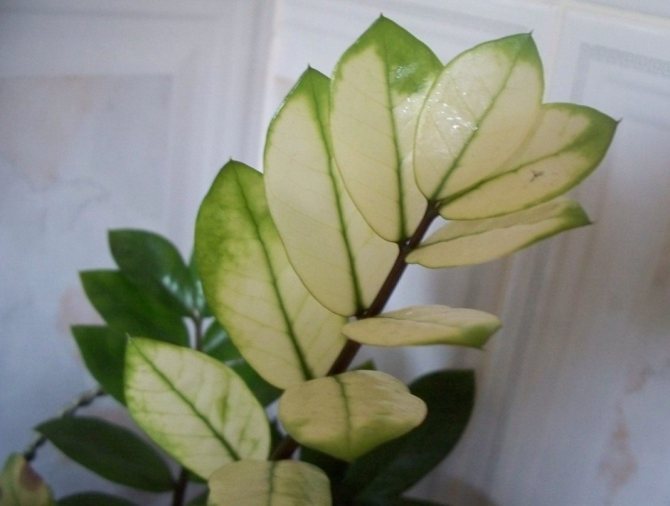

Variegated zamioculcas.
Pruning zamiokulkas. Zamioculcas - plant description
The dollar tree is a relative of plants such as syngonium, anthurium and dieffenbachia. All of them are part of the Aroid family. Only in the last century, zamioculcas began to be grown as a house plant. The description of the savage relative Zamiokulkas appeared in the 19th century.
Zamioculcas was named that way, because it was very similar to the zamia plant. Zamia has become widespread in America and is also grown in homes.
The dollar tree is very attractive to flower breeders. If you take a good look at the zamioculcas, you will find that it is quite unusual.Thick stems of zamiokulkas are covered with smooth leaves. The tubers of the tree are dense and fragile at the same time. A rare case when zamioculcas blooms (this happens exclusively at its mature age). Its flower looks like corn, is unsightly, does not live long. Therefore, such a tree is grown to a greater extent in order to admire the greenery.
The dollar tree survives drought remarkably because the plant is capable of storing moisture. The richness and brightness of the color depends on the conditions in which the zamioculcas exist, which are suitable for it.
It contains juice, it is poisonous and dangerous for people prone to allergic reactions, children and animals. You will need gloves to transplant and trim the flower. The poisonous juice should not get on the mucous membranes and skin, watch this. If this cannot be avoided, it is necessary to thoroughly rinse the affected area with water.
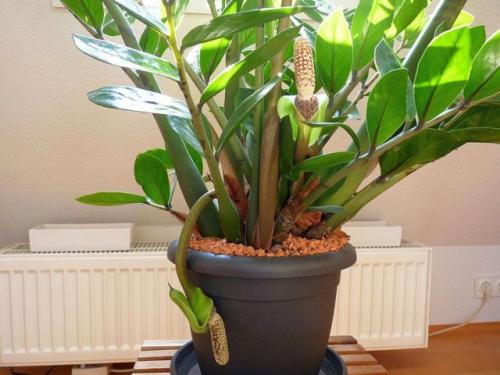

Features of the content
Such an exotic plant as zamioculcas is easily mastered at home. This flower is not characterized by whimsical care, since it is not particularly sensitive to dry air, it can exist both in the open sun and in a shaded area. The optimum temperature for the "dollar tree" is considered to be in the range from 10 to 30 degrees Celsius.
The plant does not need regular irrigation; it can maintain normal vital activity in overdried soil.


Despite the low demands on the conditions of detention, zamioculcas will fully grow and develop in an environment that is as close to natural as possible. In an apartment, the best place for a flower of this type will be south window. An insufficient amount of light is not detrimental to the plant, but it can lead to crushing of the leaves, as well as a deterioration in decorative qualities. In the warm season, the "dollar tree" should be taken out onto the balcony as often as possible.
The best substrate for the growth of a flower can be called not heavy and not clayey. Stagnation of water is considered detrimental to the plant, therefore it is better when the soil is light, loose and has a sandy base. In order for excess moisture to go away, a drainage layer must be provided in the flowerpot, which can be done from expanded clay, pebbles. The normal activity of zamiokulkas occurs even on poor soil, but if the grower feeds him, then the positive results will not be long in coming. You can fertilize a flower with a special feeding for a cactus: once every 30 days and in a small amount.
Transplanting the "dollar tree" is needed only if it is necessary to replace the pot with a larger one. For better engraftment, the roots of the plant are not buried, but are left slightly open. The correct content of zamiokulkas includes a lot of bright sunlight, a warm room, limited irrigation.
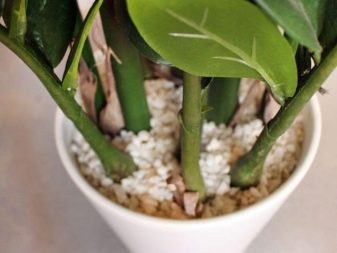

Houseplant Directory
Zamioculcas Is an East African plant from the Aroid family. Used in decorative gardening at home. It is distinguished by the presence of long, green leaves with compacted succulent-type petioles on the stem. The beauty and flowering of zamiokulkas pleases the eye in the first years, after which development is declining... That is why you need to regularly force zamioculcas to grow. You will learn how to do this in today's article.
When planting zamioculcas, they use the technique rooting of a cutting leaf to stimulate rapid development. The plant is known for its slow growth, so the florist's job is to stimulate development.
Why zamioculcas grows slowly:
- Long root tuber formation;
- Gradual thickening of the roots;
- The need to stock up on moisture;
- Rest period (October-February);
The root tuber of Zamiokulkas has its own rate of development.The season of growth and flowering is replaced by a dormant period, in which it is important to provide care for the myoculcas, thanks to which the plant will move into growth.


Zamiokulkas care during rest:
- Reduce the air temperature to 16 ° С;
- Stretch watering up to 1 time in 1.5 weeks;
- Place closer to the window;
- Wait for the development of 2 leaves;
After the appearance of the second leaf on the surface part of the zamiokulkas, you can proceed to the next step - to force the zamioculcas to grow. What do we have to do? In the spring, after a period of rest, it is recommended transplant the plant into fresh soil... When overloading zamiokulkas, try not to damage the root tuber - mechanical injuries are fraught with the suspension of development, which we need to avoid. The transplant is effective once every 2 years. If last season you did not transplant zamioculcas, this year follow the procedure in order to make the zamioculcas grow.
Zamioculcas (Dollar tree) rightfully considered unpretentious houseplant. It is often referred to as a plant species such as succulents , and, in fact, this is correct, because the soil for zamiokulkas needs stony and sandy, and watering is scarce and rare. However, it still has a significant difference from the above class. The fact is that Zamioculcas stores moisture not in the leaves, like most representatives of succulent plants, but in underground tubers, or, as flower growers call them, potatoes. Be that as it may, buying this plant for themselves, many growers hope for its development, but sometimes this does not happen. What could be the reason that Zamioculcas does not grow?
Slow and defective development
If the plant begins to lose weight and stretch, the foliage turns pale and reduces the number of lobules on the young, then most likely the reason is insufficient lighting. It is necessary to revise the conditions of detention and put the flowerpot closer to the sun, and if this is not possible, it is worthwhile to light up the tree artificially. It is necessary to purchase a special lamp for plants, which emits a spectrum as close as possible to the sun. Ordinary household lamps will not give an effect - they will not work.
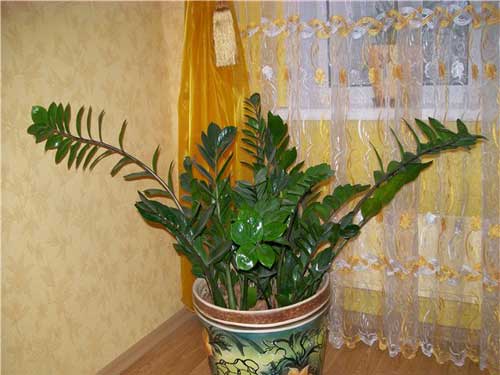

Zamioculcas, in general, and so does not differ in rapid growth, and if it slows down even more, look for the reason in the lack of space for roots - it may be necessary to transplant the plant into a larger flowerpot. Another reason for this behavior is the lack of micronutrients. Try complex formulas containing potassium, magnesium and nitrogen. The tree reacts especially sharply to a lack of nitrogen.
How to grow roots in zamiokulkas. Zamiokulkas breeding methods at home
21


Zamioculcas is a flower that will bring prosperity to the house, popularly called the dollar tree. How zamioculcas multiplies at home, what conditions are needed for this, you can read or watch
video
... The main thing in reproduction is not to rush things, the development of roots has been going on for more than one month. At first, the plant gains a tuber, and only then begins to build up the green mass. Each next branch grows from a growing tuber.
Breeding conditions
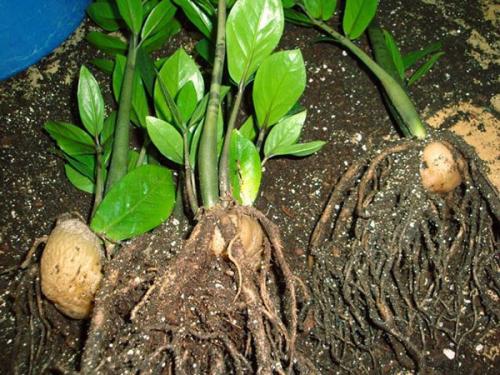

Caring for zamiokulkas at home includes reproduction with periodic transplantation into a new container. In this case, the process of dividing the tubers is gentle. They must be carefully planted in prepared bowls with a good drainage layer and covered on top until new leaves begin to form.
All parts of the plant are poisonous. When working, you need to use gloves, and make sure that the pieces of the plant are not eaten by animals or children.
Other ways to get new plants are by rooting cuttings, leaves, or cut tubers. It must be borne in mind that any breeding method is long-term. Therefore, if germination takes place in water, then it should not turn sour. Germination substrate does not contain humus, sterile, steamed.
In the process of rooting, a nodule is formed due to the nutrients of the leaf or cutting. Therefore, by the time the first young leaf appears, the old part turns yellow and wrinkles. This is normal.
Rooting takes place in warmth and light. So that the ground part does not evaporate moisture, a cap is created over the plant, sometimes the new plant is ventilated. Watered very sparingly, so that the water wets the ground only at the sides of the glass.
How to plant zamioculcas at home
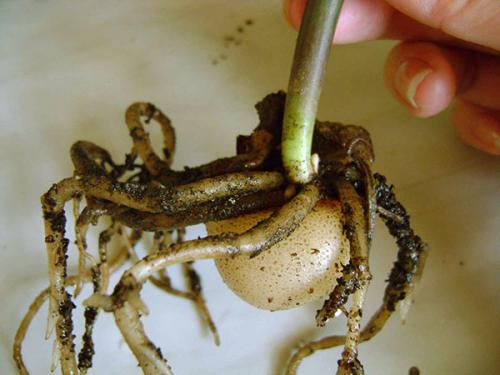

If the flower has outgrown its dishes and the grower does not need new specimens, then the roots do not disturb. The pot is either cut or broken, the plant is removed and planted in a new bowl, slightly larger than the old one.
How to propagate zamioculcas at home when planting an adult plant? Place each tuber in a separate bowl. The soil is taken light and fertile. Add humus and expanded clay to the composition of equal parts:
- turf;
- leafy land;
- sand;
- peat.
It is only necessary to plant the plant in spring in shallow pots, a quarter of the height of which is occupied by the drainage layer.
For transplantation, you can divide the bushes by carefully disassembling the intertwined roots, or you can cut the tuber. If the tuber has more than one dormant bud, it divides in half. Sections are dried, sprinkled with coal dust, planted in a small pot. You can water the ground for the first time in 3 days, a little.
Any transplanting and handling for a flower is stressful, and it takes time for it to regain its healthy appearance. Therefore, the flower grows until it deforms the pot. If you plant zamioculcas in a large bowl until it is full, there will be no branch growth.
Reproduction of zamiokulkas by cuttings and leaves
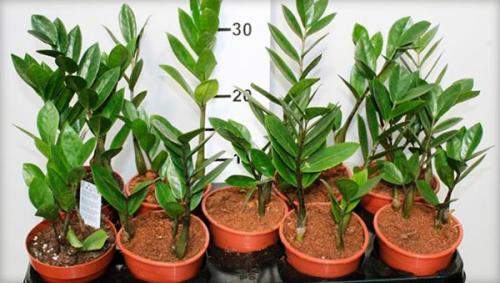

As practice shows, it is easier to propagate zamiokulkas by leaf or cuttings. To do this, you do not need to injure the plant by transplanting. A sharp knife can be used to separate one pinnately dissected stem. If you cut it into segments that have growth buds, then these are cuttings. The upper stalk may contain many blades. And the higher the cutting, the more successful the rooting.
At home, zamioculcas multiplies both in water and in a special substrate. In this case, it is important that the tip of the petiole does not rot. For this, activated carbon or a fungicide is added to the water, which suppress the decay process. It takes a month or more before roots appear. Rooting can also be done in clean wet sand or sphagnum moss.
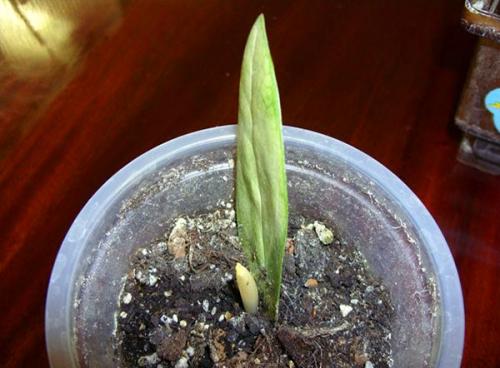

Leaf blades for propagation are cut with a sterile instrument with a piece of the stem. They can root in water or directly in a sterilized substrate. Such rooting will last 2-6 months, you need to be patient while the nodules grow at the base of the leaf.
If the upper part of the leaf is planted with several leaf blades, development will be faster. But then each sheet must be planted in a separate glass and provide a support. There should be a drainage layer in the dishes, an opening for draining water. The stalk is placed in an airtight bag or under a jar. Occasionally, the plant is ventilated, watered sparsely, along the walls of the vessel. And only when the first leaf appears, the shelter is removed.
Part 1.
Part 2.
Part 3.
Part 4.
Fertilizing zamiokulkas - what to use and how to apply?
An indoor decorative flower does not require special care, but a properly selected top dressing will provide the plant with a beautiful appearance.
Zamiokulkas bloom infrequently. After the flowers fall, the soil in which the culture grows becomes depleted. The process of flower formation takes a lot of energy, so additional nutrition during this period is very important.
Zamioculcas must be fertilized every 2-3 weeks, starting from March 10-15 and up to September inclusive. An ornamental plant responds well to liquid fertilizing intended for succulents and cacti. Such preparations should be free of nitrogen.
Fertilizer for zamiokulkas in concentrated form is subject to mandatory dilution in water.
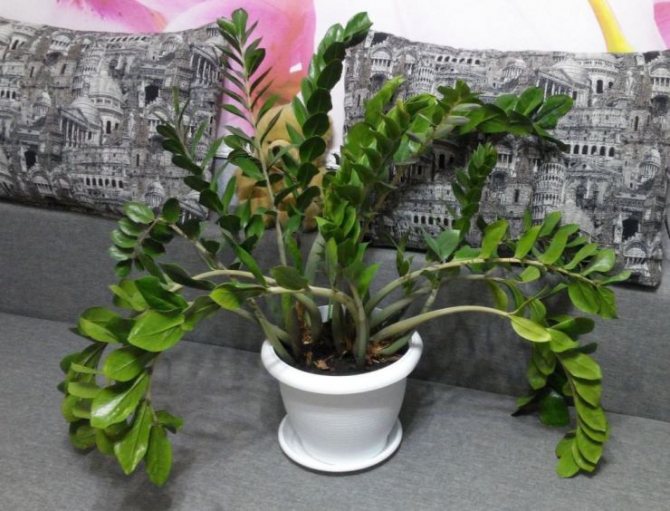

You can also apply feed for deciduous ornamental crops, but dilution should be carried out with the addition of more water than according to the instructions for other plants.
The use of a high concentration of top dressing and the introduction of nitrogen preparations are detrimental to zamioculcas. They are too aggressive for such a plant, cause burns, decay of the entire root system and green mass.
Top dressing is applied only to pre-moistened soil. For the aboveground part, a root solution is used, additionally diluted 10 times. From the first days of October, fertilization of zamiokulkas should be suspended.
Signs of a lack of nutrition
With a deficiency of nutrients in the zamioculcas, the appearance changes: the plant becomes painful, weak. Symptoms of a lack of useful ingredients:
- falling leaves;
- the green part dries, becomes yellow or light green, with brown spots;
- shoots begin to increase in size, become thin.
The first signs of the disease will help determine the deficiency of adequate nutrition and tell you when to feed the zamioculcas.
Timing and frequency of application


To grow a healthy plant, you need to know the rules of fertilization.
The first top dressing should be applied in the spring after planting in a pot. This is due to the increasing activity of the young shoot, which requires a lot of energy for growth and development. In winter, the feeding process must be minimized, and if the zamioculcas feels good, then fertilization is completely excluded for this period.
With the arrival of spring and active growing season, the feeding of the ornamental plant should be resumed and carried out at intervals of 2 times a month. As a fertilizer, ready-made complex preparations for cacti are used. Succulent mixes can also be purchased.
- 1) irrigation of the green part of the plant in the form of a working solution, foliar feeding;
- 2) watering the root system.
Spraying is applicable only to a healthy plant that does not show a single sign of disease or depletion. The frequency of processing is once a month.
It is forbidden to feed more than twice a week.
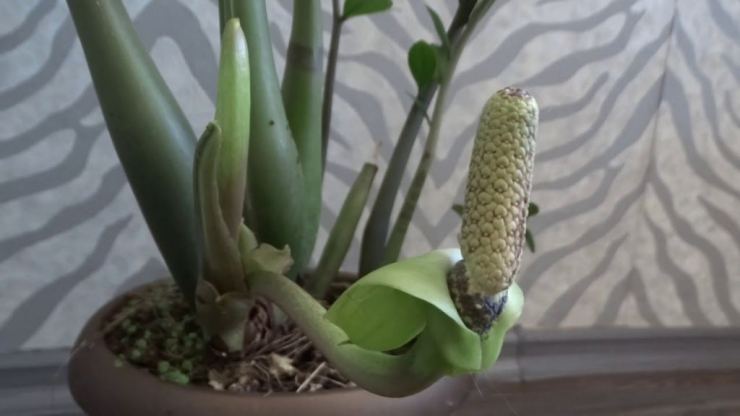

During the period of budding and flowering, it is recommended to suspend the fertilization of zamiokulkas. The preparation of a solution for irrigation is reduced to mixing 1 g or 1 ml of the selected product with 1 liter of water. Leaf replenishment is a supplement to the treatment of the plant roots.
Description of zamiokulkas
Zamioculcas (Zamioculcas) is a monotypic genus of plants of the Aroid family (subfamily Aroideae, tribe Zamioculcadeae), represented by a single species - Zamioculcas zamielistny (Zamioculcas zamiifolia) is native to tropical Africa.
The homeland of zamiokulkas is the desert expanses of Africa, where it grows along with other succulents - plants capable of storing moisture in fleshy stems, leaves and roots, which these plants use during drought.
Zamioculcas has a large underground tuber, rather large leathery leaves covered with a wax coating. Zamiokulkas leaves are pinnate, erect, located on thick, fleshy petioles. All parts of this plant are adapted to create water reserves in case of prolonged drought. In a dollar tree, flowering is a rather rare phenomenon, especially in indoor conditions.
The zamioculcas flower resembles an ear in which light, small, inconspicuous flowers are collected. The ear itself is formed in the lower part of the plant and is covered with a green veil, therefore it is hardly noticeable. Zamiokulkas grows slowly, but an adult plant grows up to one meter in height, so it is more suitable for large rooms, although as a single plant it will decorate any interior.
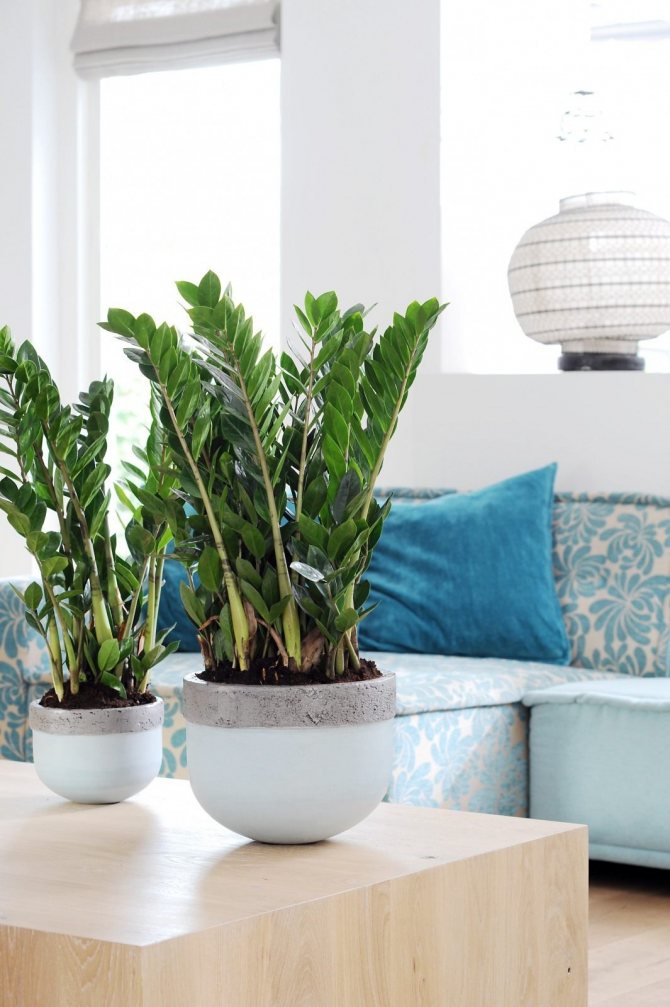

Zamioculcas (Zamioculcas).
Zamioculcas shriveled tubers. Why did the zamioculcas have a shriveled trunk?
The trunk of the zamiokulkas has softened and wrinkled.Read in today's article why the trunk of the zamiokulkas wrinkled, leaves fade, spots appear? We will show you what to do to restore the zamioculcas.
Why did the zamioculcas have a shriveled trunk?
Shriveled stem, zamiokulkas leaves do not appear spontaneously - plant degradation is preceded by other visible symptoms, for example, falling leaves, yellowing, wilting of the plant. We have examined why the leaves of zamioculcas turn yellow and dry, let's find the reasons why the trunk of zamioculcas wrinkled.
What the florists say:
- The trunk of the zamiokulkas shriveled if overdried.
- Shriveled leaves and trunk, softened shoots - flooded, rotted roots.
- Leaves wrinkled - little light.
Violations in the mode and volume of irrigation remain the number 1 reason why Zamiokulkas has a problem with leaves. In this case, the plant can be either yellow or wrinkled - depending on whether it is overdried or overmoistened. In order not to wait for the leaves to fall off, you need to restore moisture.


How to save zamioculcas?
- Filled zamioculcas - dry. Stop watering until the earthy clod is completely dry. Start adding water little by little, slowly moistening or increasing the moisture concentration. Monitor the state of the zamiokulkas.
- Overdried zamioculcas - gradually moisturize. Shriveled from lack of moisture, if it really is, the leaves of zamiokulkas will return to normal as soon as water comes in. It is important not to pour over the tuber with root shoots at a time. In addition, it is imperative to use settled, warm water; do not direct a stream of water at the root collar.
Zamioculcas with a rotten tuber due to temperature fluctuations, violations of the same irrigation regime, direct and concentrated fertilizers cannot be saved. It is imperative to remove the zamioculcas from the ground, examine the roots and, if there is anything to save, transplant it into fresh ground after pruning and processing. In detail: how to save zamiokulkas if the tuber is rotten?
What you need to trim the roots: pruning shears, charcoal in powder, or "Fundazol", as well as fresh earth soaked in 1% solution of potassium permanganate. How to properly transplant zamioculcas?
Adjust lighting - bring zamioculcas back to life
Lack of sunlight has a bad effect on zamiokulkas - leaves wrinkle due to short, poor lighting. Direct rays are also not the best helpers in caring for zamiokulkas.
How to highlight zamiokulkas correctly:
- Increase lighting if shaded.
- Do not place in direct sunlight.
- Heat is not lighting.
- Put on the southeast, southwest window.
Where does Zamioculcas usually stand? In the corner on the floor, by the sofa or bedside table. The place was chosen for the florist, but not for the zamiokulkas. In such a place, the plant gets sick, gets cold, suffers from a lack of light. It is correct to put the zamioculcas at home on a stand or a high bedside table, not far from the window, or in a well-lit area.
Every time before changing the procedural regime, take a close look at the plant: what is missing, what it looks like, what is better to add to the ground, or, conversely, what to exclude from the leaving schedule. The plant is alive, does not live by calendar moisture, feeding, and the vector of development changes depending on the microclimate and season. Zamioculcas: signs and superstitions. Listen to your zamiokulkas, and he will tell you why the barrel wrinkled, and with the help of our recommendations, you can quickly correlate the problem with the solution.
Resuscitation methods
How to save a zamioculcas with rotten roots, is it possible to save a rotten tuber? Can a dollar tree be reanimated? Yes, but it will take time.
If rot is found on the roots or stems of zamiokulkas, it must be removed immediately - cut off the damaged roots, cut off the affected part of the stem and tuber with a sharp knife.After that, immerse the root part of the flower in a solution of any fungicide (HOMa, Fundazole) or rinse in a solution of potassium permanganate, then let it dry, sprinkle the cut areas with ash. If there was rot on the stems, put the whole plant in the fungicide solution for 15-20 minutes. Transplanted only into a new pot and soil, do not water for the first two weeks. When watering, you can use drugs for better survival, for example Kornevin.
When pruning and replanting, keep in mind that the sap of the dollar tree is poisonous. Work with gloves, do not let the juice get on the body.
Pests
Often, the "dollar tree" is damaged by harmful insects that get on it from the contaminated soil or together with a purchased flower. That is why growers recommend introducing a quarantine regime for a new plant for 14 days by placing the purchased flower in a separate room. In a situation where an insect is seen on the zamioculcas, it is worth removing it from the main flower mass and treating it separately.
To pests that often attack an exotic houseplant, include the following parasites.
- Mealybug. When this parasite attacks, deformation of the leaf plates occurs. It settles on the foliage of the plant and reproduces on it. The mealybug feeds on the sap of the flower, while blocking its access to oxygen. To eliminate the parasite will help washing the plant with a solution of laundry soap, as well as treatment with a chemical, for example, "Aktellik", "Fitoverm".
- Thrips. The appearance of a white bloom on the foliage of the zamiokulkas, as well as the curvature of its shoot, indicate an attack by thrips. An exotic flower should be limited from contact with the rest of the indoor flora, and then treated with "Karbofos" or "Intavir".
- Mite. Parasites of this species are easily seen on the green part of the "dollar tree". This is a small insect that reaches no more than 1 mm in length. Red spiders envelop the leaf plates of the flower with a cobweb. The elimination of the pest should be carried out mechanically: wiping the leaves with cotton swabs dipped in alcohol. The web can be easily removed with a cotton swab. The final stage in the destruction of ticks is the treatment with "Aktara", "Aktellik".
- Shield. This parasite has a body length of 4 mm, so it is easily visible on the plant. The pest has a shell and is colored brown. The scabbard feeds on the juice of the zamiokulkas, the consequence of which is the appearance of black spots and the drying of the flower. Before starting the treatment of the plant, it is necessary to perform mechanical elimination of the parasites. You can get rid of the scabbard with the help of Actellik.
Planting and properly selected soil ...
When transplanting, the nature of the growth of the zamiokulkas should be taken into account. The rhizome, like any stem, has a growth point, so more space must be left in its direction, trying not to cover it with earth.
Planting zamiokulkas is carried out in poor, well-drained soil with the addition of sand, fine gravel, pebbles, perlite, expanded clay. Under natural conditions, the plant grows precisely in such sandy-rocky places. In heavy soils, rich in humus, zamioculcas gradually degrades. Their mixtures remain moist for a long time, the roots stop breathing and quickly rot.
From the purchased, you can recommend soil mixes for cacti and succulents. Sand, perlite or expanded clay must be added to the universal earth. Don't forget about good drainage.
Sometimes the growing rhizome strongly deforms or even breaks the plastic container, in this regard, it is preferable to choose a bulk container: a floor bowl or an earthen pot.
Treatment
If the zamioculcas is sick, then the florist can save him on his own. You can revive the plant in the following ways.
- When rotting flower tubers, it is necessary to preserve all intact parts of the plant. The flower grower needs to do everything to save his healthy fragments. From the remaining elements, you can grow a new "dollar tree". If at least some whole roots remain, then they should be planted in new soil. If only whole leaves remain, they are sent to the water to build up the root system.
- Twisted foliage indicates a pest attack. In this situation, the zamioculcas is examined completely, and if a parasite is found, it is worth taking effective measures to combat it.
- Frostbitten foliage «dollar tree» need to be trimmed. Some time after the procedure, the florist can observe the appearance of new healthy leaves.
For the treatment of zamioculcas the following fungicides can be used:
- "Maxim" - it is effective in combating rot and red burns;
- Fitosporin - a good drug to fight fungal infections;
- Fundazol necessary to combat fungal spores;
- "Hom" used for brown spots and bacteriosis;
- "Chinozol" Is an effective antibacterial drug.
A flower grower should remember that the processing of the "dollar tree" should be carried out only with one of the above drugs, according to the instructions.
You can also fight the ailments of an exotic flower with the help of folk remedies.
To eliminate rot, the flower must be removed from the container, the decayed areas must be cut off, and the cut sites must be treated with wood ash or cinnamon.
To get rid of the whitefly, you need to wash the greens of the "dollar tree" with dust soap, which can be bought at the pharmacy. To get rid of parasites, wipe the foliage with an alcohol solution and wash the plant with laundry soap.
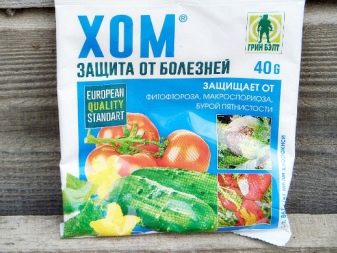

Stem decay
The decay of the stem of the zamiokulkas signals a serious illness, since often root rot develops at the same time. The main reason is excessive watering and low temperatures in combination with improperly prepared soil. If the soil is heavy, clayey, in cold weather it is not able to drain even a limited amount of water, and this leads to its stagnation and, as a result, rot on the plant.
In such a situation, the first step is to normalize the external conditions - temperature and watering, and then, you will have to remove the plant from the flowerpot and heal. All its parts are treated with a solution of fungicides and planted in a new flowerpot or disinfected the old one. The old land will have to be thrown away and replaced with a new one.
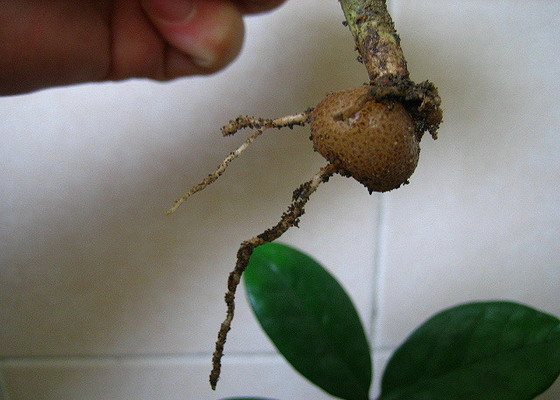

In the case when it is impossible to save a dollar tree - its tubers are severely affected, it will have to be disposed of, but a new plant can be grown from its upper part by rooting part of the leaves.


